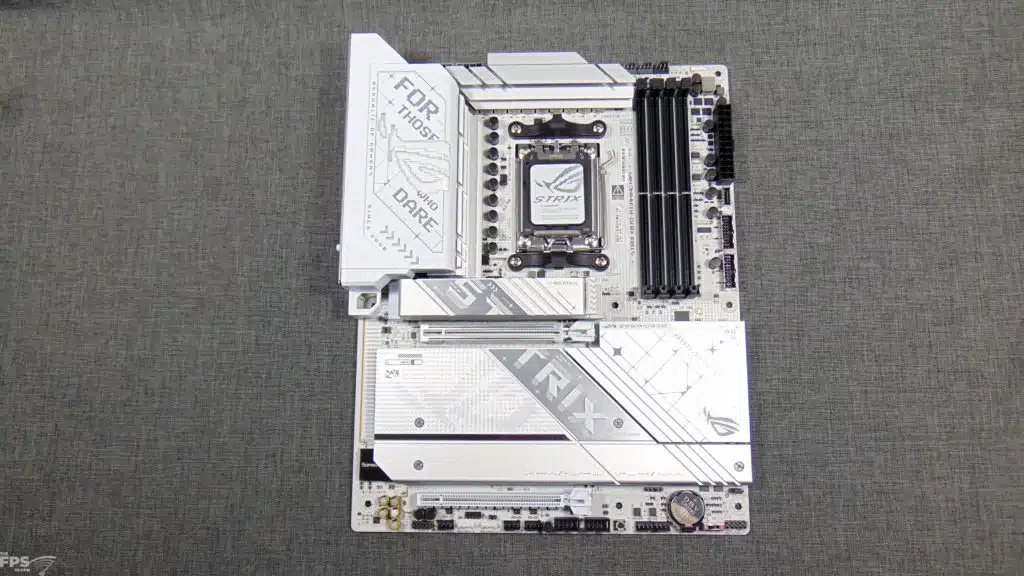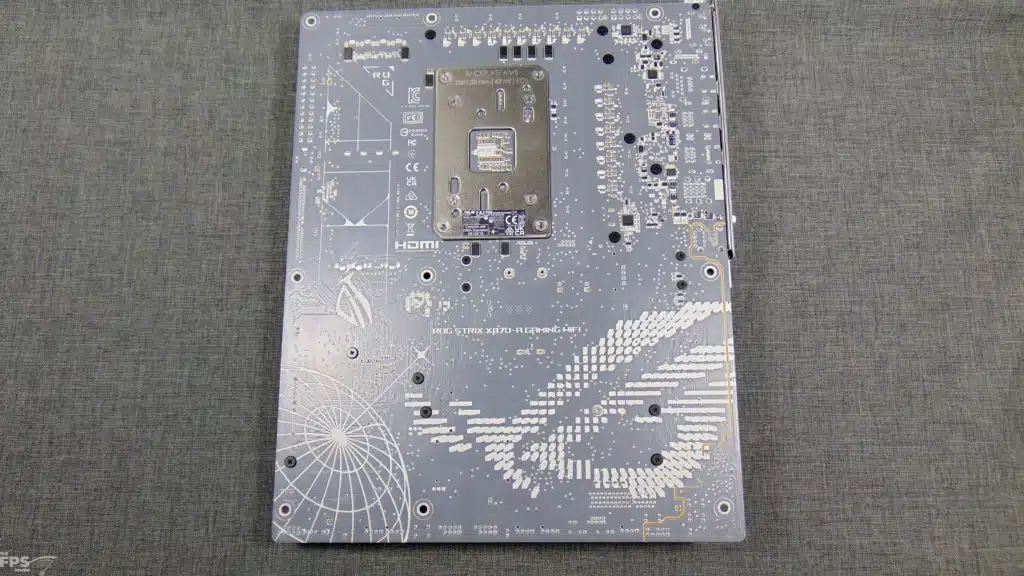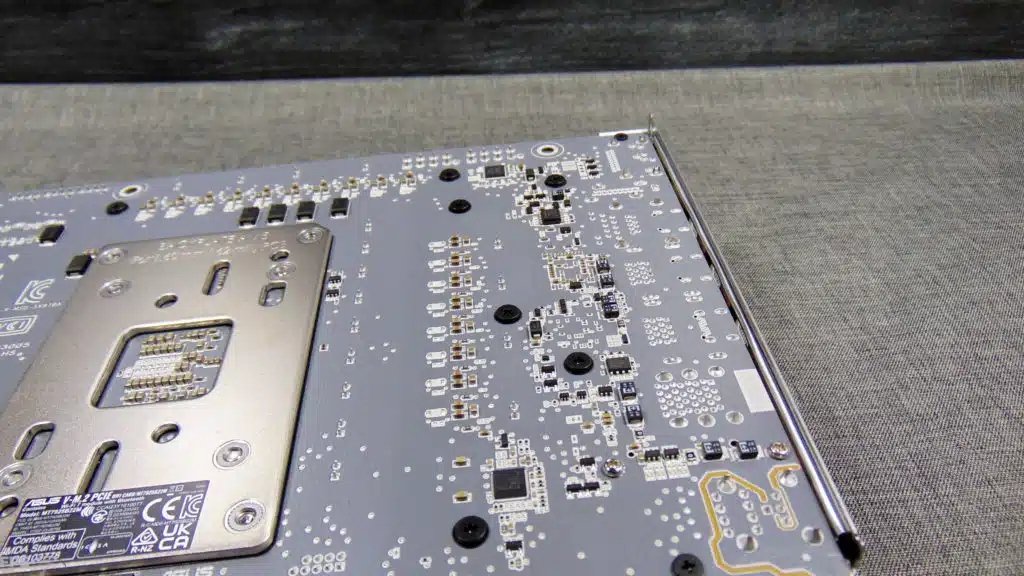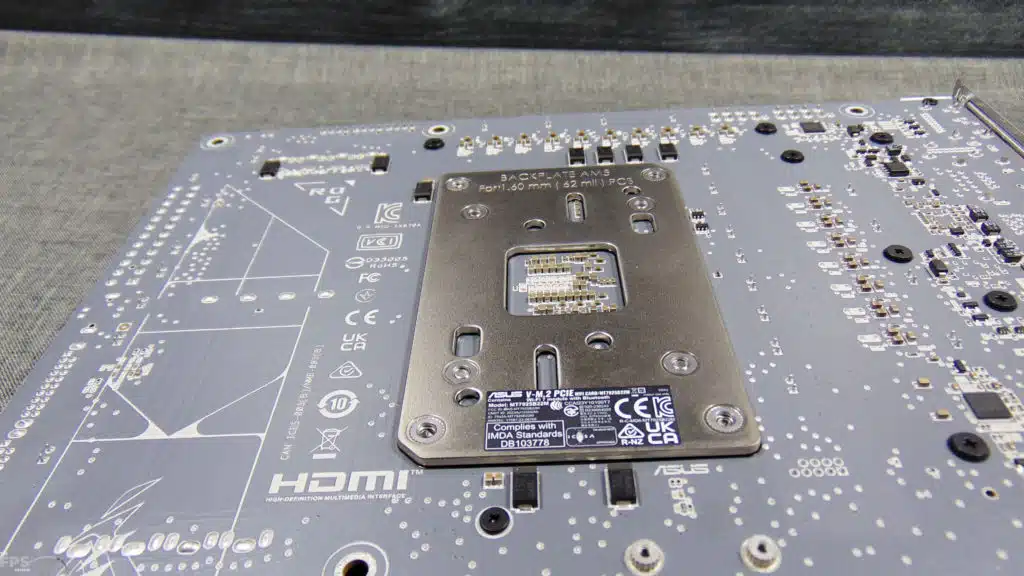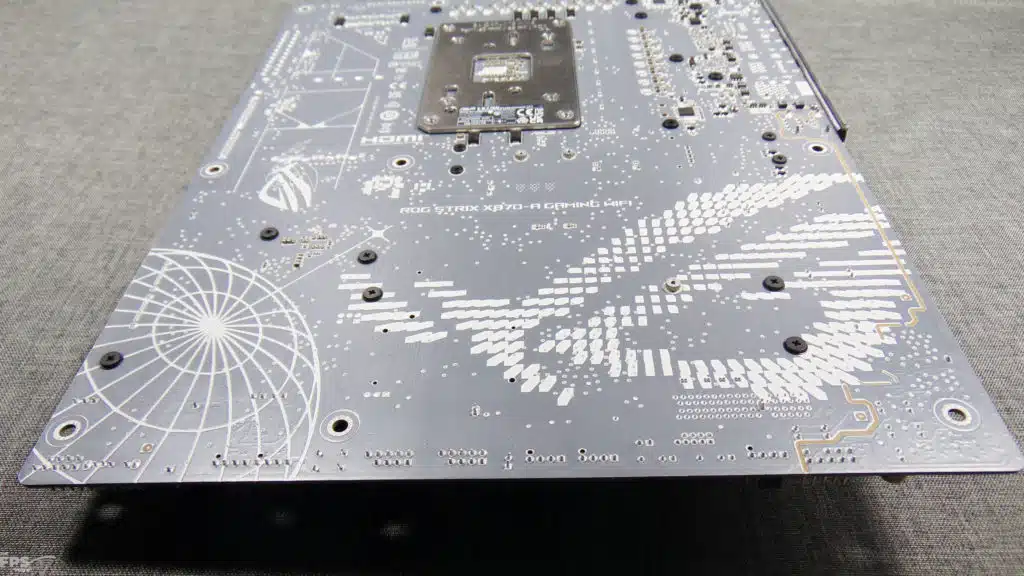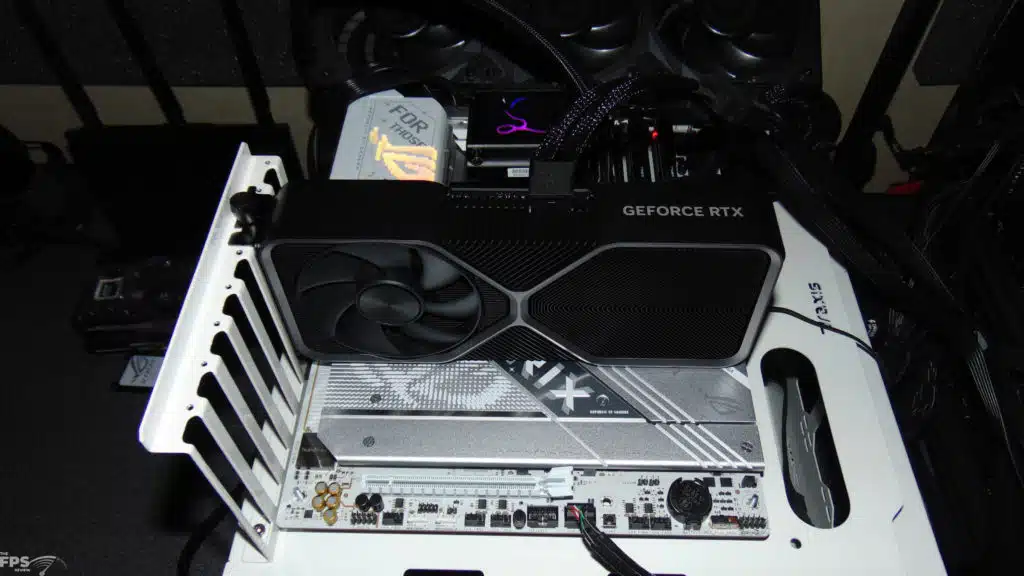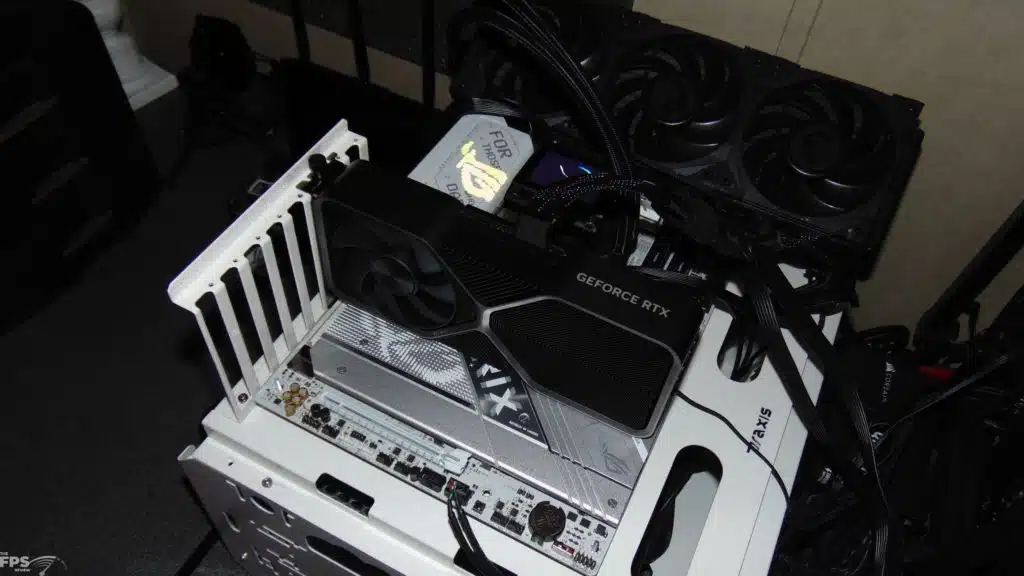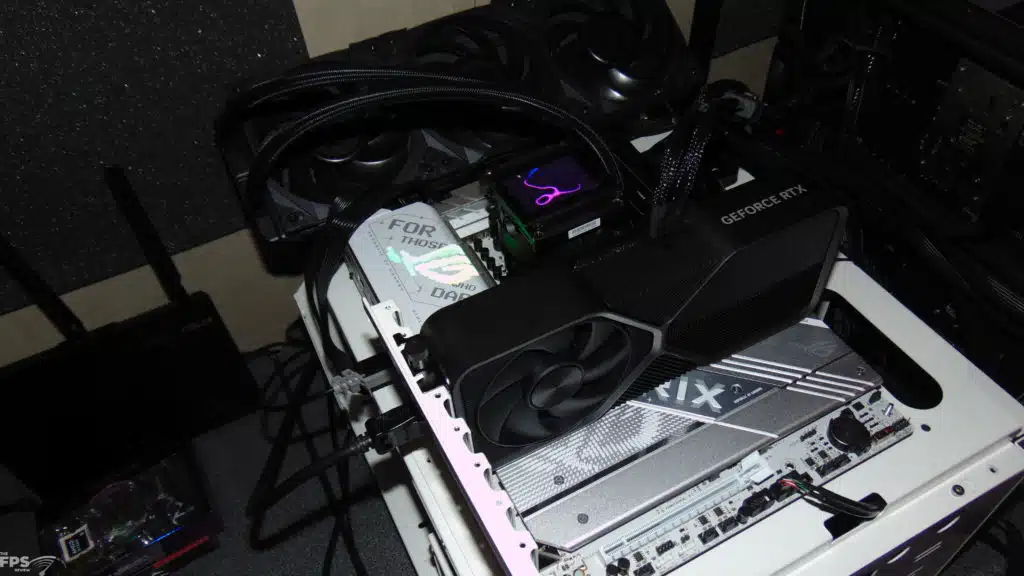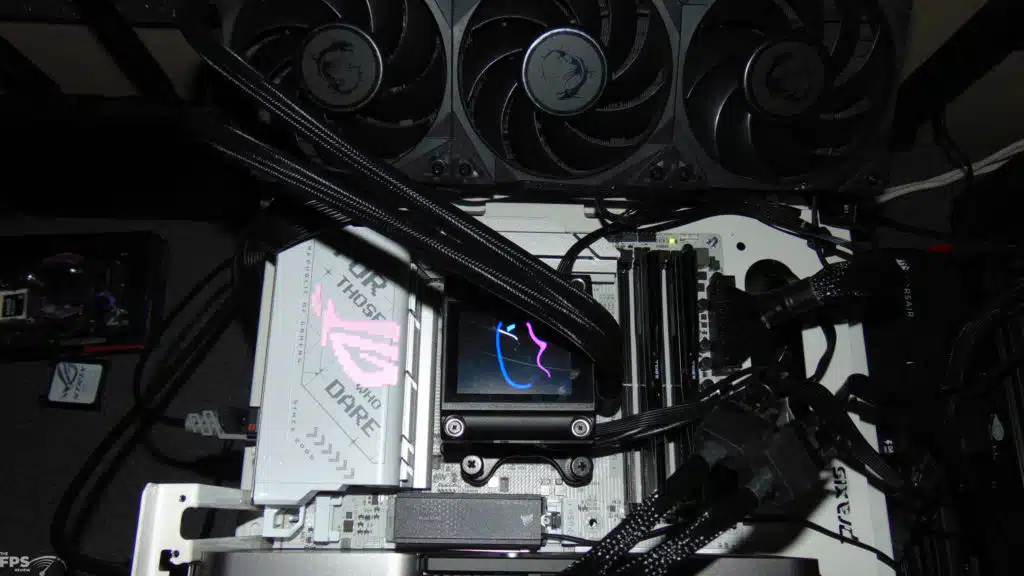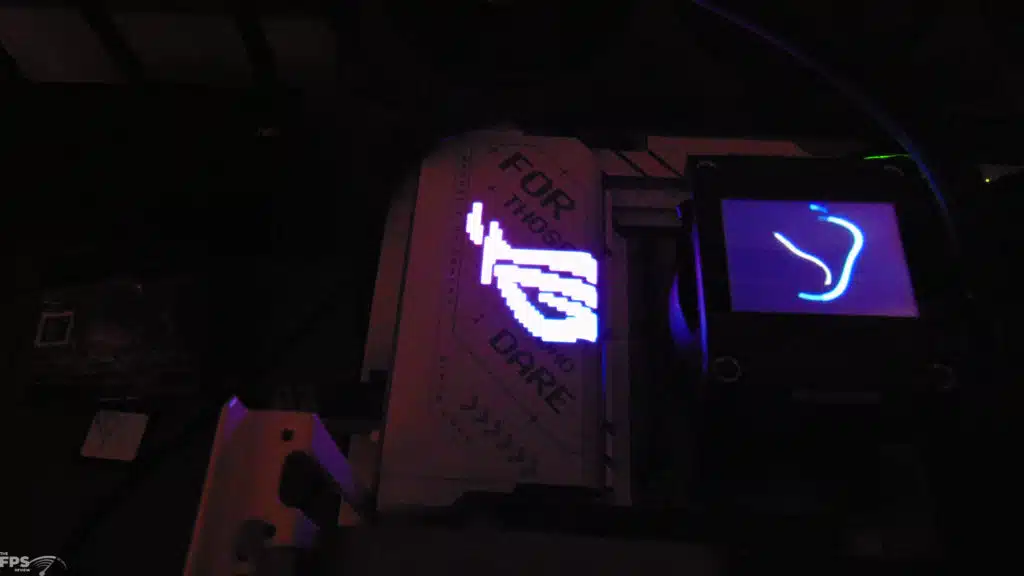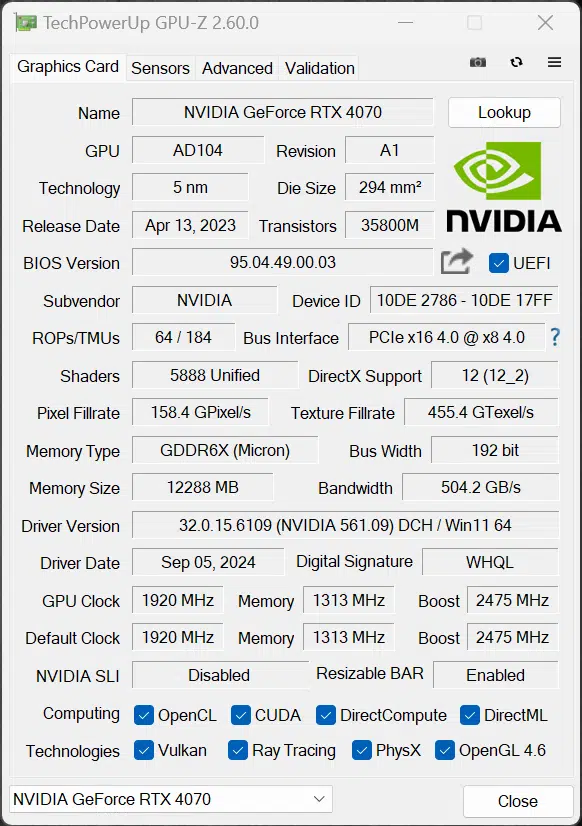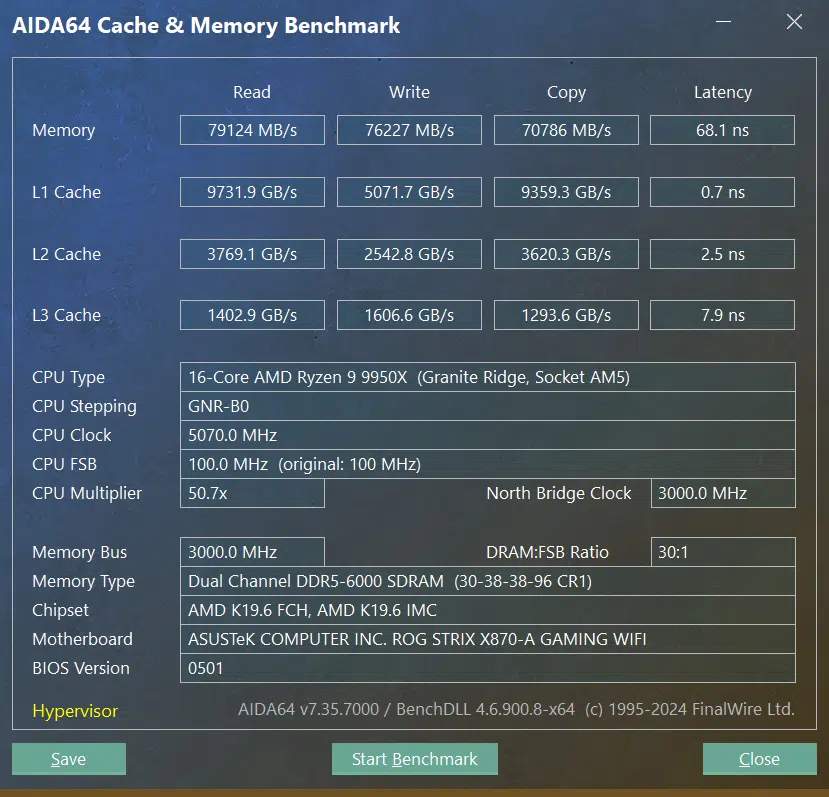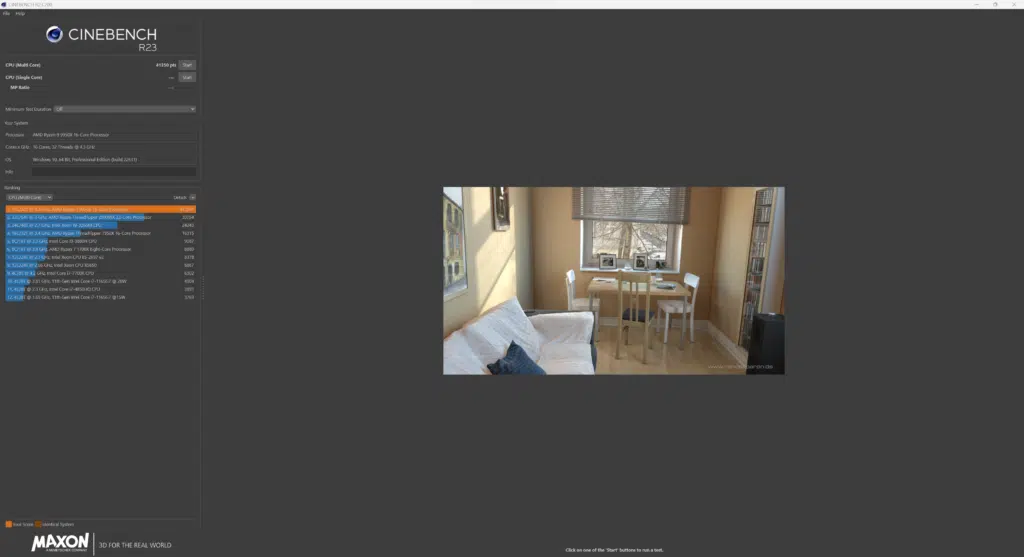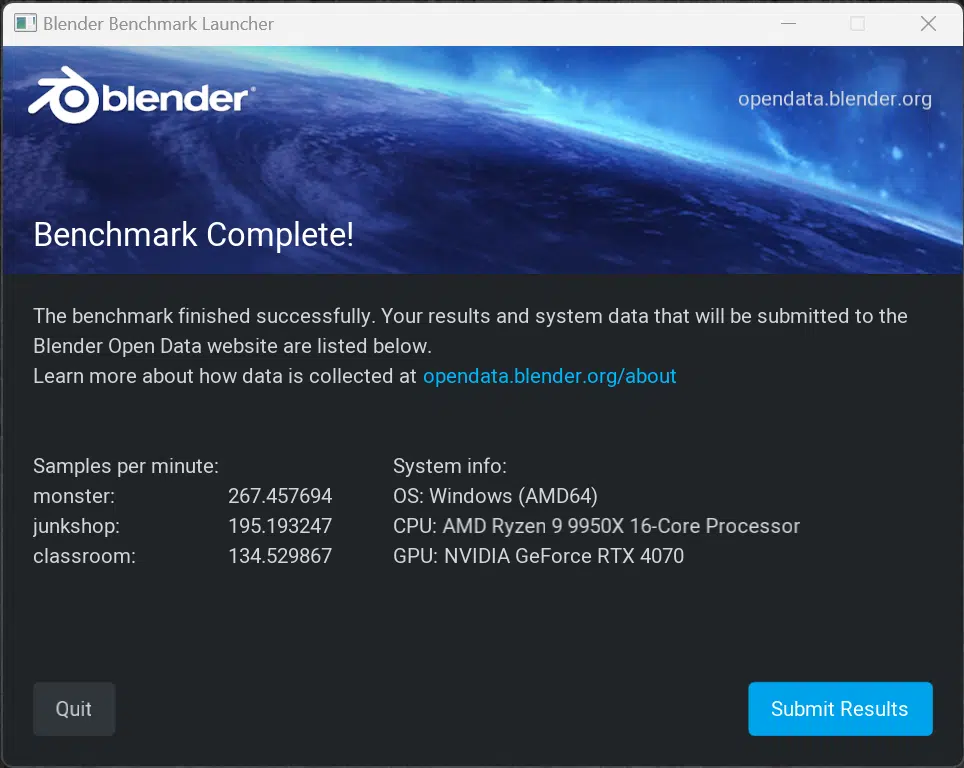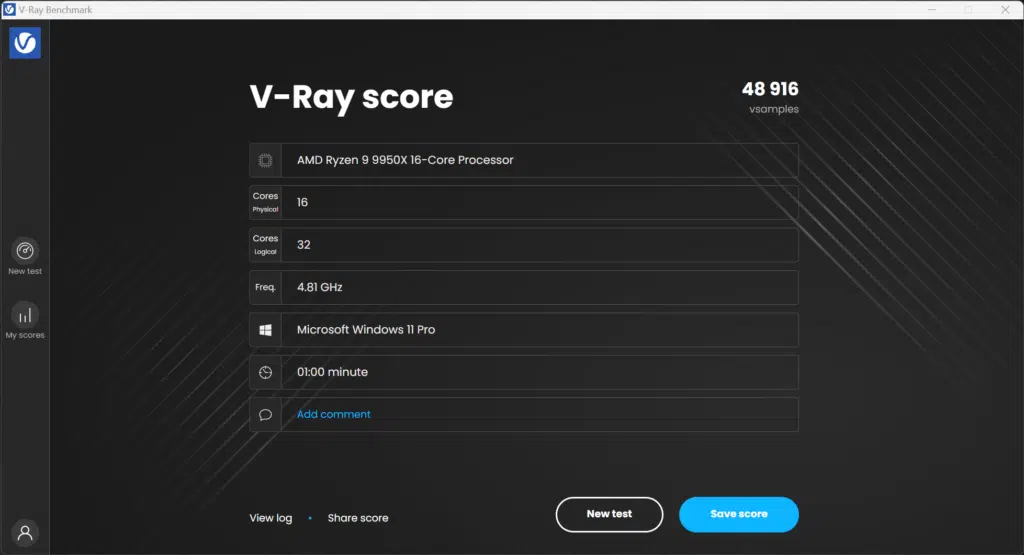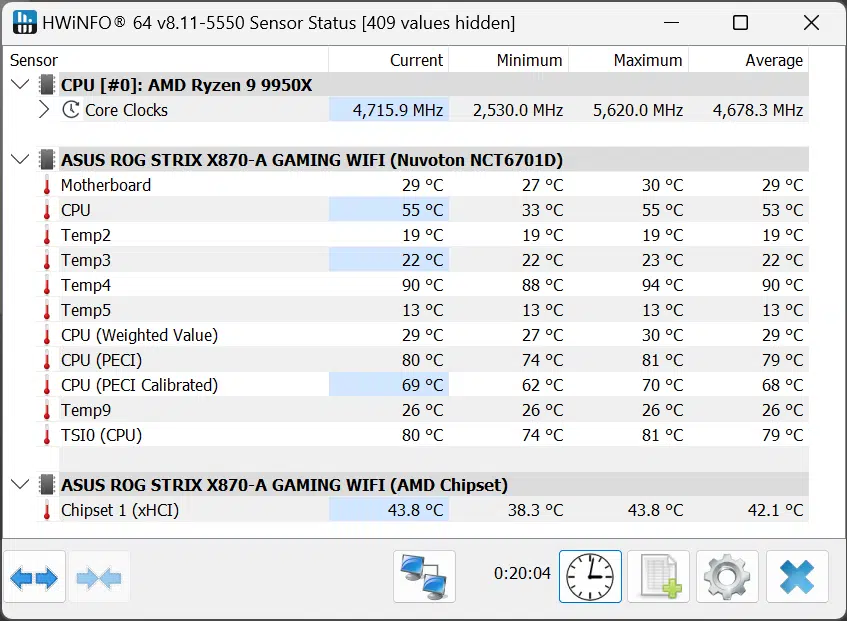
Introduction
ASUS is launching new AM5 socket motherboards, across the line, from bottom to top, based on the new AMD X870 and X870E chipsets in September 2024. Across ASUS’s lineup of PRIME, ProArt, TUF GAMING, ROG STRIX, ROG CROSSHAIR, and all the sub-SKUs, you’ll find a new refresh of AM5 motherboards. These new motherboards feature new designs, features, and ease of life changes, including features such as USB4 and WiFi 7 for awesome connectivity, plus more.
At the very high end, the ROG CROSSHAIR is built for overclocks and extreme gamers, but right below that is the ROG STRIX series for the style-conscious gamer, and this is the series we are reviewing in this review below that you’ll find the TUF GAMING for casual gamers and first-time builds, of course, the ProArt series for creative professionals, and finally the PRIME series for the all-around PC builders.
Under the ROG STRIX lineup, ASUS has four distinct models available. There is a top-end STRIX based on the X870E chipset, and then three STRIX models based on the X870 chipset, one of them being a Mini-ITX form factor. The model we are reviewing today sits toward the end of the X870 ATX spectrum in the ROG STRIX lineup. Check out the ASUS X870E/X870 Motherboards Guide for more information.
We have the ROG STRIX X870-A GAMING WiFi motherboard, which sits right below the ROG STRIX X870-F GAMING WiFi, the primary differences being a different VRM power rating, and color scheme difference. The ROG STRIX X870-A GAMING WiFi is based on the AMD X870 chipset and has an MSRP of $369.99.
If you aren’t familiar with the AMD X870 and X870E chipsets, these are new chipsets for AM5 motherboards announced back at Computex 2024. Though these new AM5 chipsets were announced alongside AMD Zen 5 CPUs (Ryzen 9000 series), they are not required to run Zen 5 CPUs, and have no performance differences for Zen 5 CPUs, or Zen 4, compared to previous AMD X670 and X670E series chipsets.
Primarily, the addition of USB4 is added as a requirement, and the number of PCIe lanes changes around a bit to allow for features such as Gen5 M.2 connectors, and Gen5 PCIe expansion slots. This does give motherboard manufacturers the chance to feature new designs, updated components, and perhaps even better routing of lanes for higher DDR5 memory frequencies. AMD has a great comparison chart here that shows the differences in PCIe assignments, and requirements.
Packaging and Contents
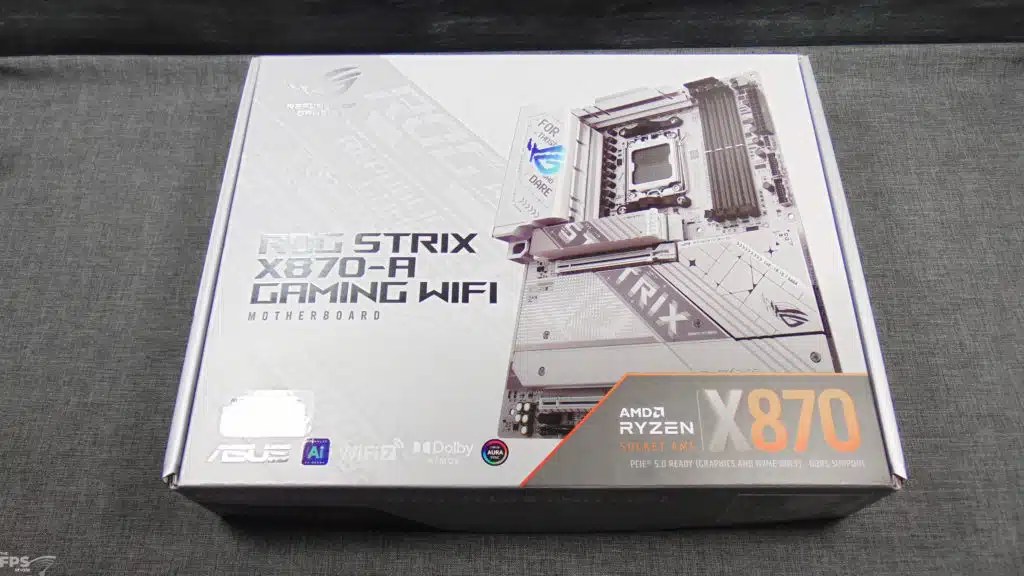

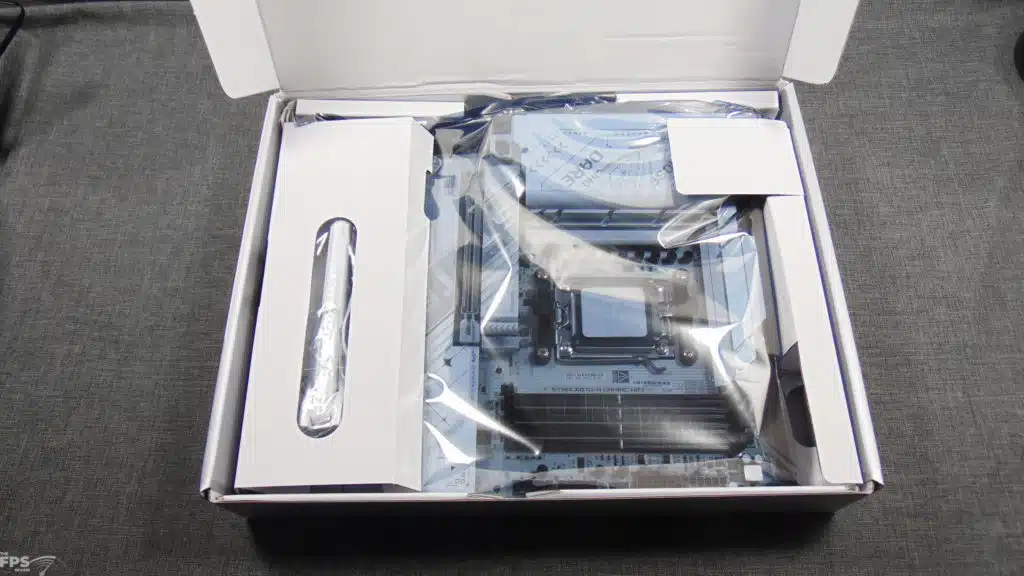

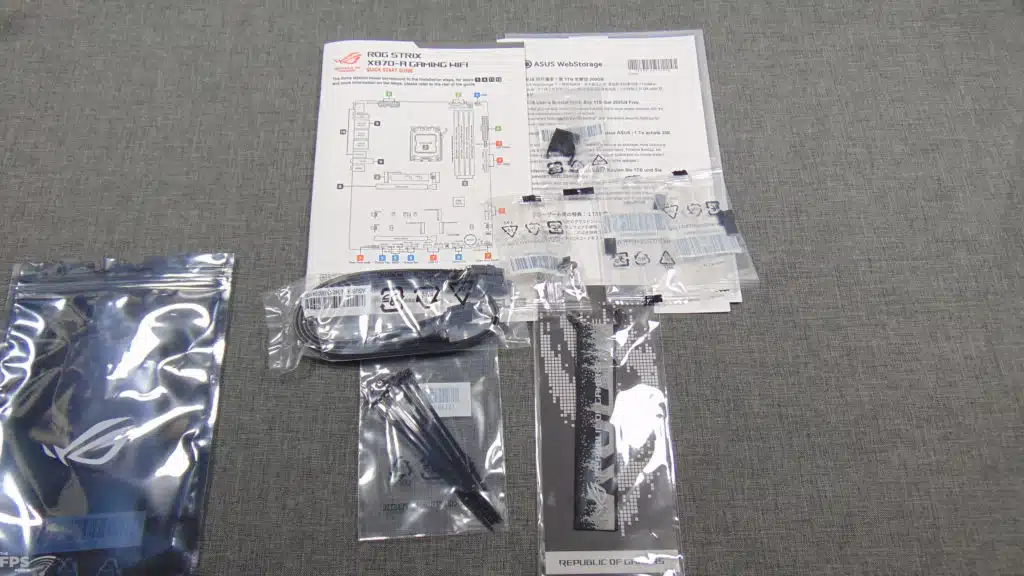
The ASUS ROG STRIX X870-A GAMING WiFi is packed very well, held tightly in the box with a top box containing the white color-matched WiFi ASUS Q-Antenna. The Q-Antenna allows for easy connection by just snapping it into place on the rear, without having to fumble with fasteners. Underneath the bottom tray, you’ll find quite a bit of items, including two SATA cables, one thermal pad for M.2 22110, one package of cable ties, one M.2 Q-Latch package, one M.2 Q-Slide package, one ROG key chain, one ROG STRIX stickers, four M.2 rubber pads package, and a quick start guide with diagrams.
ASUS ROG STRIX X870-A GAMING WiFi Features
Not only are the plastic components white, but the PCB itself is white, and there are silver accents as well. The back, however, is not exactly white, but still a very light color and matches well with the overall theme. On the front, it’s an all-white PCB, which is unique. To continue the look, ASUS has the VRM heatsinks with a silver aluminum look to maintain the theme, and there are other silver accents as well.
We will talk about all the features in further detail, overall specs are that this is an AMD AM5 socket ATX-sized motherboard. It features DDR5 support up to 8000+MT/s and 192GB using ASUS SafeDIMM. It has 4x M.2 expansion for storage and even has support for 2x Gen5 NVMe SSD, 2x Gen4 NVMe SSD support, and SATA. It supports a x16 PCIe slot that supports PCIe Gen5. It has 2.5Gbps LAN, WiFi 7 support, and USB4. The ASUS ROG STRIX X870-A GAMING WiFi utilizes an 8-layer PCB.
Power Delivery
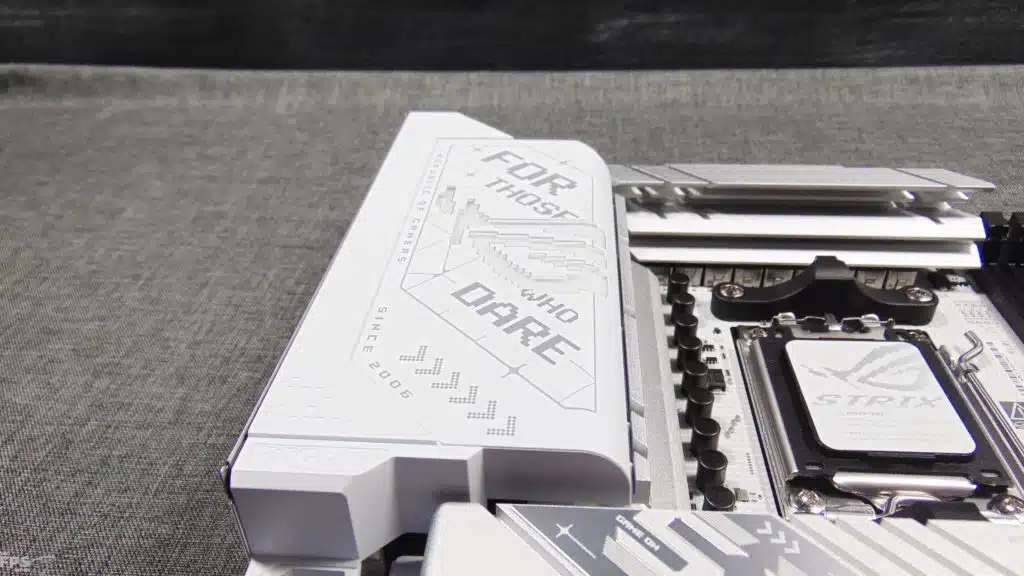

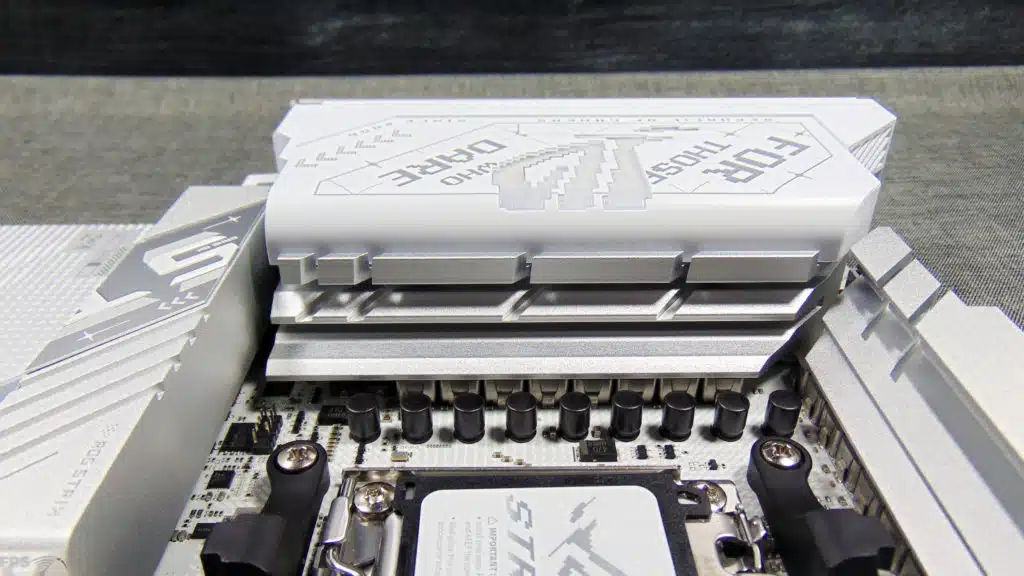
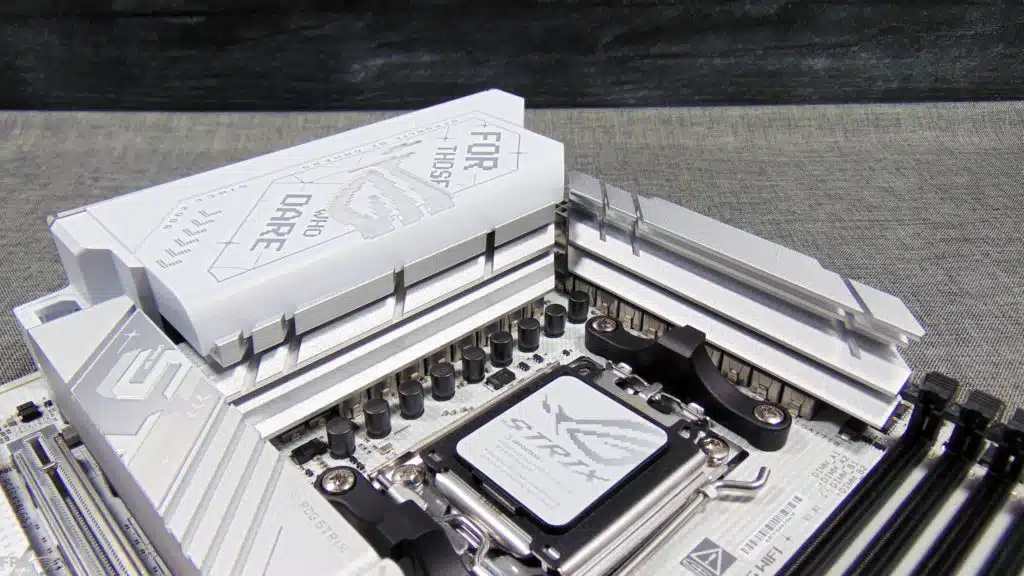
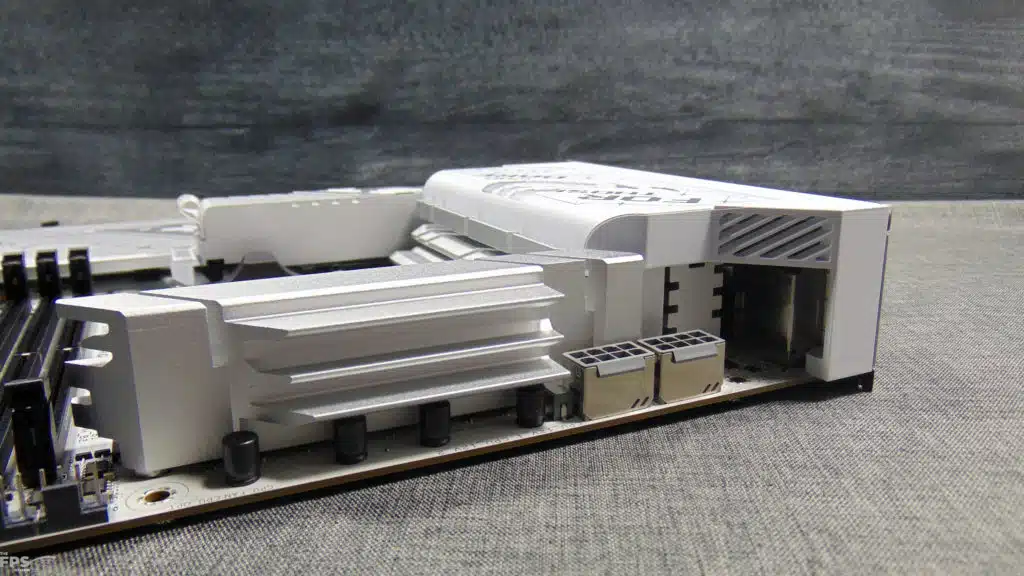

The ASUS ROG STRIX X870-A GAMING WiFi utilizes a 16+2+2 power phase configuration, that is 16x for VCore, 2x for SOC, and 2x to AUX power. The maximum for VCore and GT Power is 90A, SPS. This differs from the ROG STRIX X870-F GAMING WiFi above it, which has the same VRM configuration of 16+2+2 but utilizes 110A for VCore and SOC, therefore the ASUS ROG STRIX X870-A GAMING WiFi differs in the maximum amps. The ASUS ROG STRIX X870-A GAMING WiFi utilizes high-end alloy chokes and durable capacitors.
The VRMs are cooled by two thick VRM heatsinks that are connected by a heatpipe. ASUS uses high-quality thermal pads to improve heat transfer. There are two ASUS ProCool II 12V EPS power connectors on top, which are precision-built to ensure flush contact with the PSU and use a metal sheath to improve heat dissipation and lower electrical impedance.
Memory and Storage
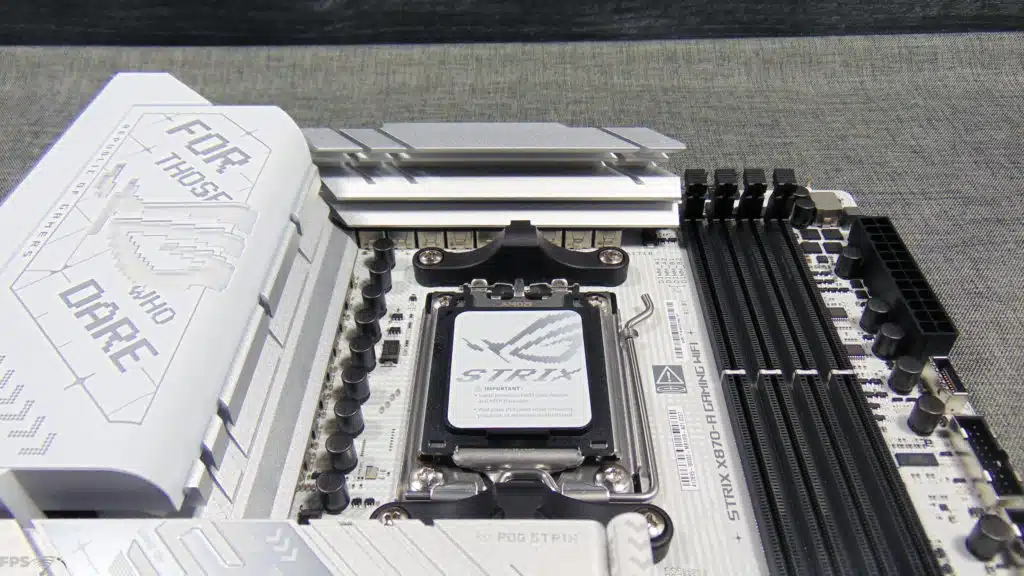
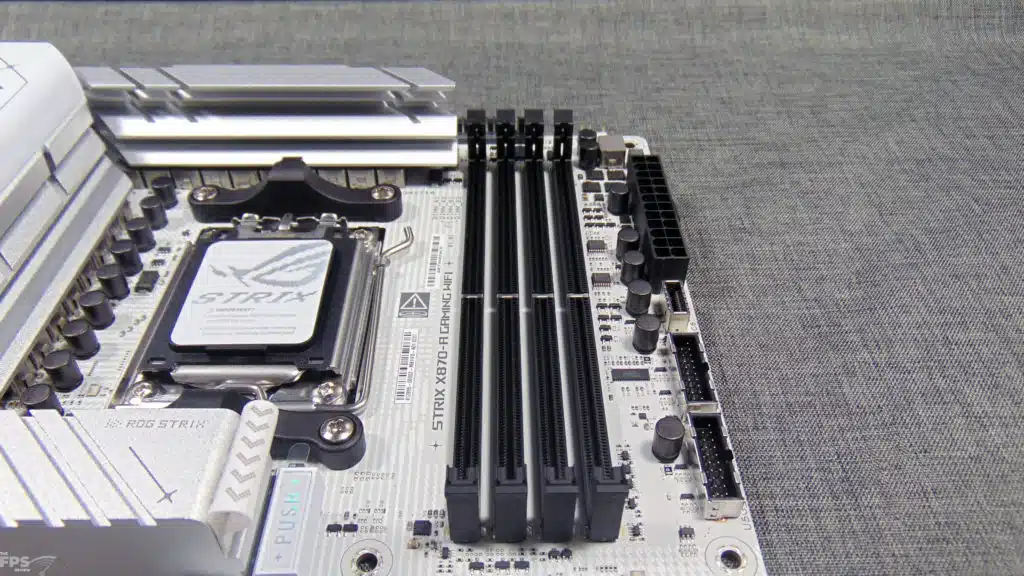

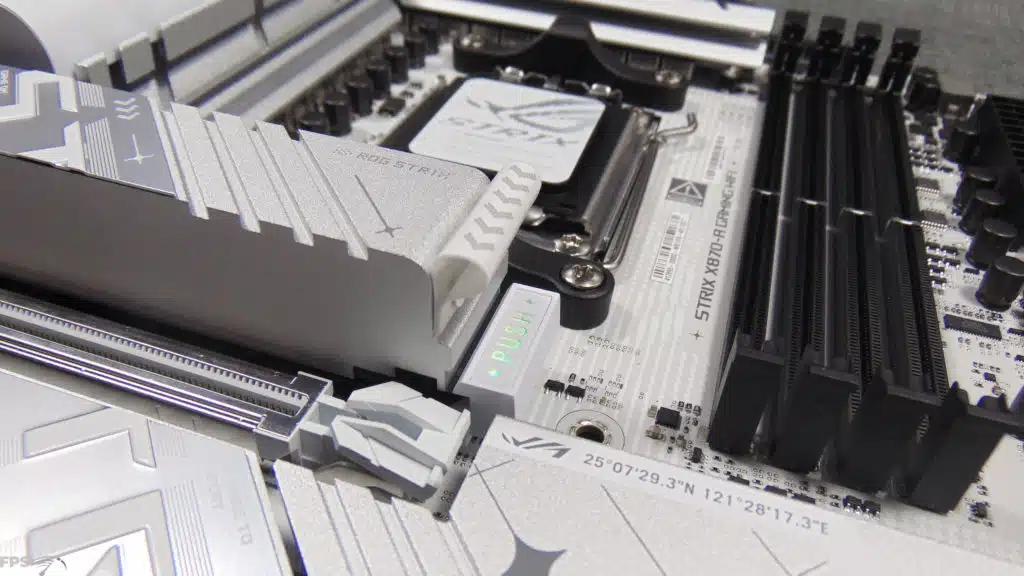
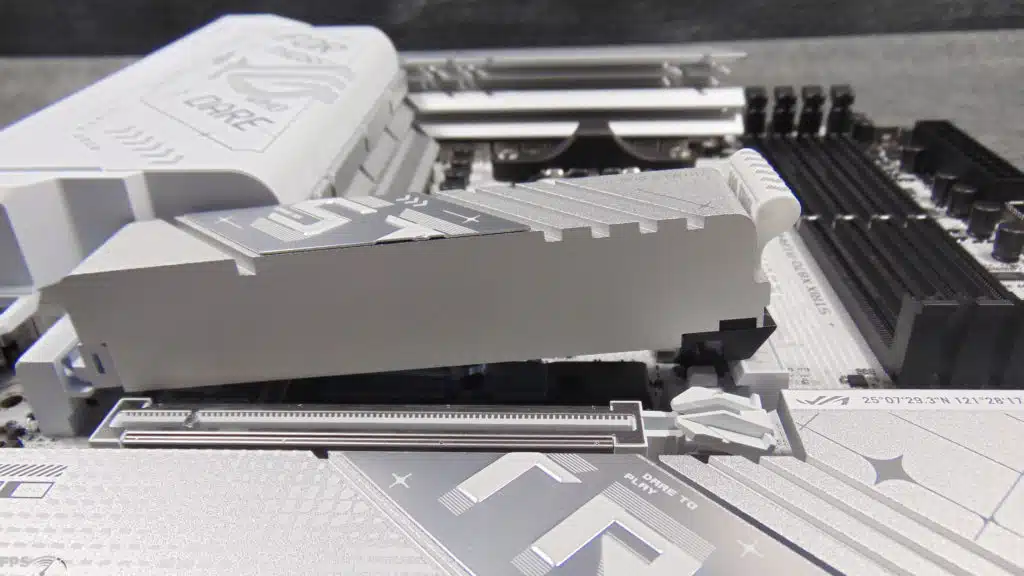

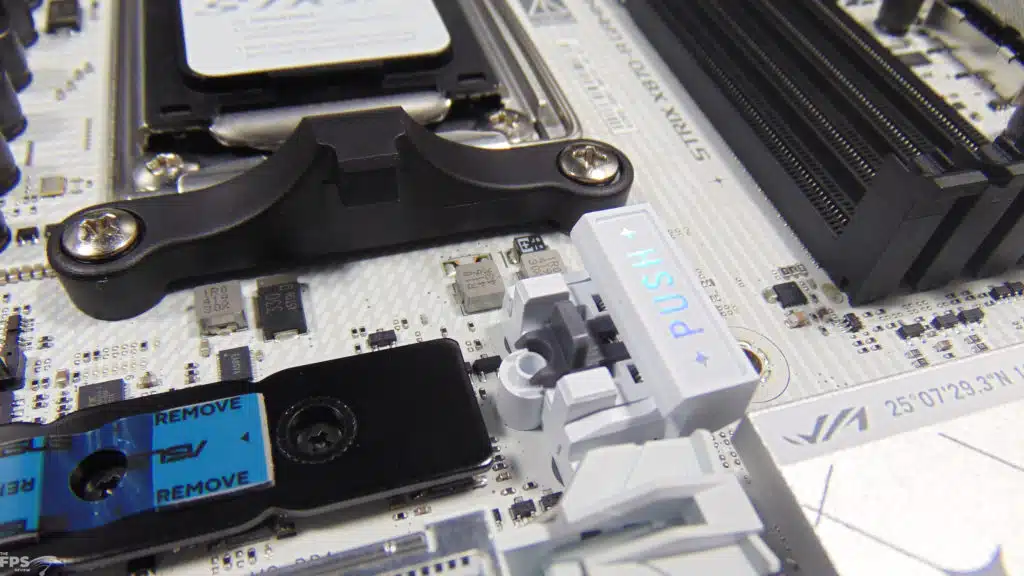
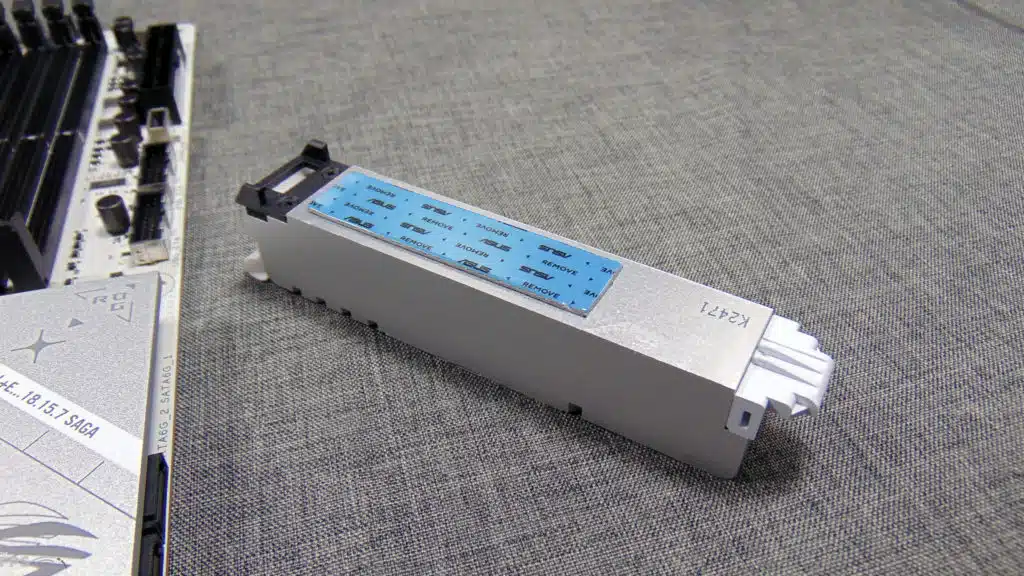
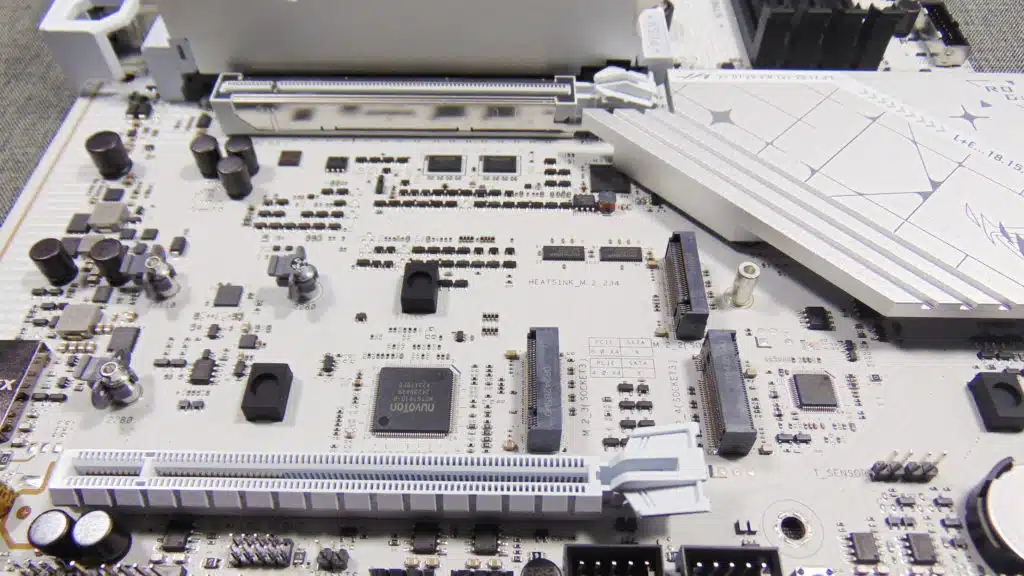

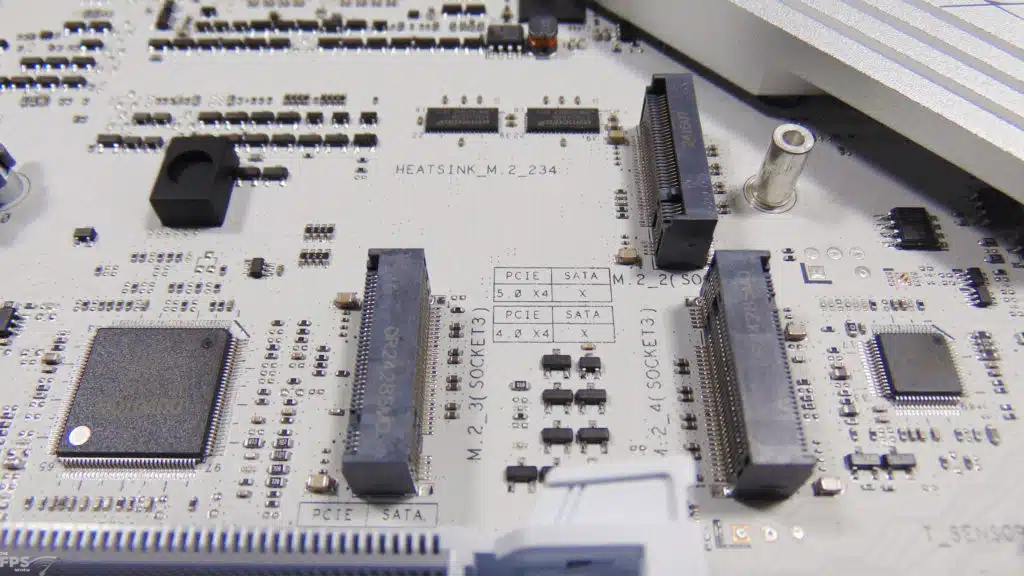
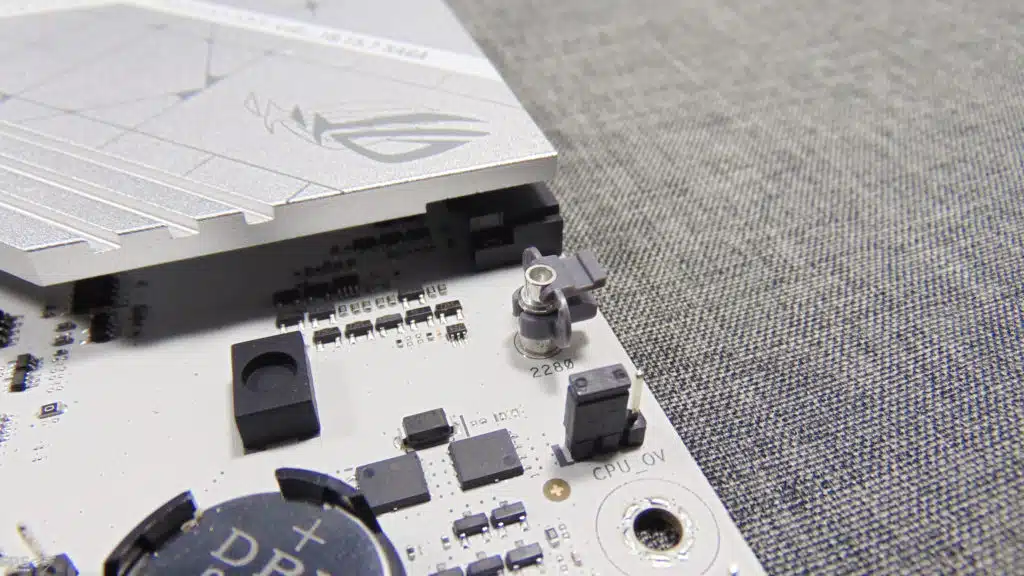
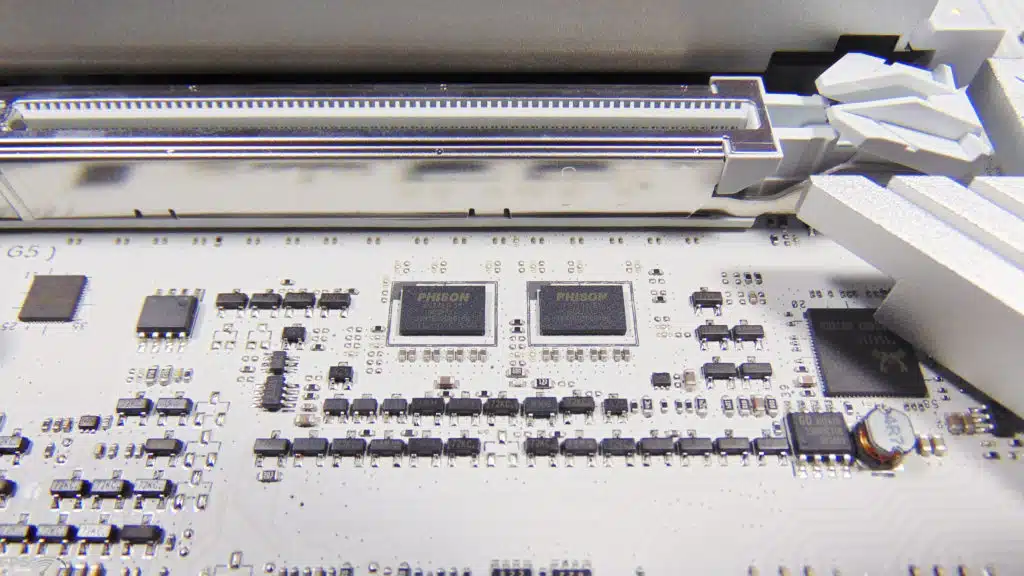

It is great to see that all four M.2 sockets have heatsinks, the primary M.2 socket has its own separate heatsink, while the three other M.2 sockets next to the chipset all share one big slab of metal to keep cool. We also find that every M.2 socket provides a thermal pad pre-installed. However, on the three M.2 sockets near the chipset, those only have thermal pads for one side of the SSD, there are no bottom heatsinks or thermal pads for the underside of the SSDs for those sockets.
The most interesting feature to note is that both the M.2_1 socket (primary M.2 socket) and M.2_2 socket (secondary M.2 socket) both support PCIe 5.0 x4 (Gen5) NVMe SSDs. That’s right, this motherboard has dual Gen5 SSD support on both sockets, at the same time.
However, the most important note about that, is that any PCIe 4.0 Gen4 or PCIe 5.0 Gen5 SSD installed into the M.2_2 socket (secondary M.2 socket) will downgrade your GPU slot to a x8 interface speed, instead of x16. If you want to retain the x16 GPU operation, do not install an SSD into M.2_2, however a Gen5 in M.2_1 is just fine, and both will operate at full speed.
The other unique feature of the ASUS ROG STRIX X870-A GAMING WiFi is that the M.2_1 socket (primary M.2 socket) has a very large and useful heatsink that has a quick release using ASUS new M.2 Q-Release system, combined with M.2 Q-Slide and M.2 Q-Latch.
In other words, the primary M.2 socket is completely toolless, you are able to simply push a button, and the heatsink slides off. Then, you simply install your SSD and it will push down and pop in with the Q-Latch system. In addition, with the unique M.2 Q-Slide system, you can insert a slider for different-sized SSDs while still retaining the bottom heatsink. This socket supports SSD sizes 2280, 2260, and 2242.
You will also find that this socket does have a bottom heatsink, and bottom thermal pad for both sides of the SSD. However, we did find it a bit narrow, and not as wide as other bottom heatsinks and thermal pads we have seen, while it will cover the bottom chips on an SSD, it will not fully cover them from edge to edge due to the narrow nature of it. On the plus side, the heatsink itself is a very solid piece of aluminum, it is quite hefty and chunky and should cool a Gen5 SSD passively, and decently, as long as you do have good case cooling and airflow in your system.
The other remaining M.2 sockets reside under the large shared heatsink, and those also feature the M.2 Q-Latch system, making the installation of the SSD into the slot itself a toolless operation (once you remove the heatsink cover with a screwdriver).
It is great to see that all the M.2 sockets have this Q-Latch system so that it is easy to install and remove SSDs, without having to fumble with a small screw. The M.2_2 socket also supports up to 22110 sized devices, as well as 2280 and smaller. The other two sockets support up to 2280 SSDs and the M.2_3 and M.2_4 sockets support up to PCIe 4.0 x4 (Gen4) NVMe SSDs. Under the primary PCIe slot, you’ll find a couple of Phison’s PCIe 5.0 Redriver IC PS7101 chips.
Expansion
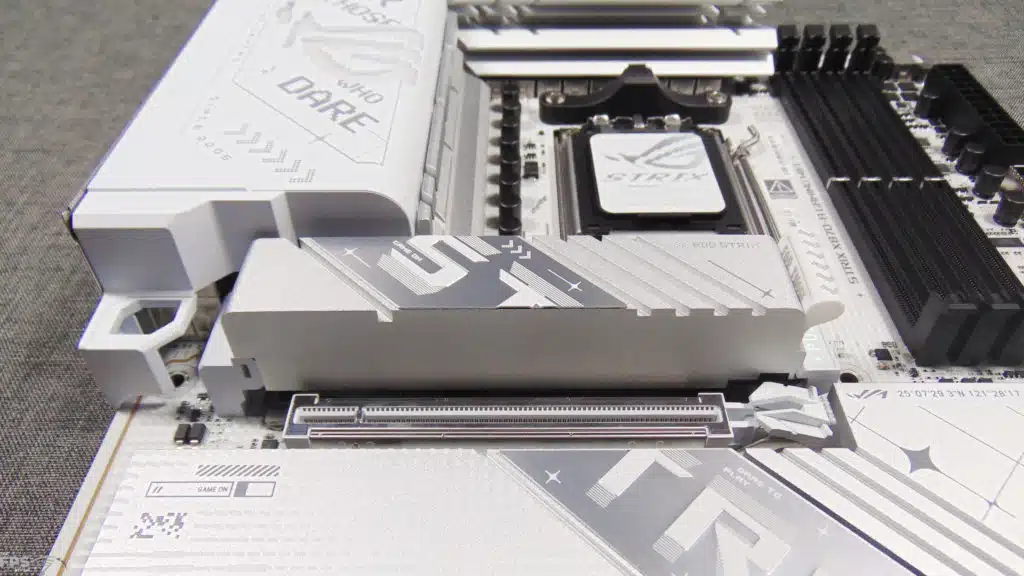
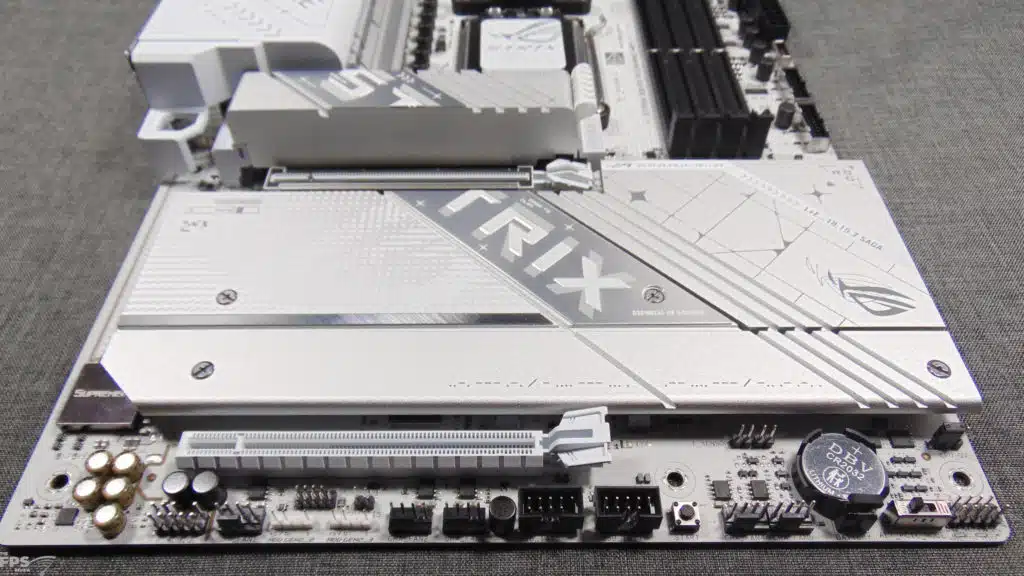
The ASUS ROG STRIX X870-A GAMING WiFi has two PCIe x16 sized expansion slots, the primary slot (PCIEX16(G5)) supports PCIe 5.0 x16. The secondary PCIe x16 sized slot (PCIEX16(G4)) supports PCIe 4.0 x4 only, even though it is sized as a x16 slot, it is only wired for x4 lanes. As we indicated above, if a PCIe 4.0 or 5.0 NVMe SSD is installed in M.2_2 socket, then the primary PCIe GPU slot will operate at x8 lanes instead of x16. Also note that if M.2_3 is occupied with an SSD device, then the secondary PCIe expansion slot will be disabled completely, so if you need this expansion slot or a x4 device in that slot, do not put an SSD in M.2_3 at all.
The ASUS ROG STRIX X870-A GAMING WiFi features ASUS PCIe Slot Q-Release Slim on the primary PCIe GPU slot. This is a unique expansion card removal system that allows you to simply pull the front end of the expansion card upwards, thus releasing the card from the slot without having to manually push down on the latch itself. We tried it, and it works brilliantly, and without issue.
It is very easy to just tilt the video card, and it detaches from the slot and pulls out with ease, there is no need at all to fish for a screwdriver to push down on the latch anymore, just literally title the video card and pull it out without issue. It works quite well and is the easiest removal system we’ve ever used on a motherboard. The primary PCIe x16 slot also has an ASUS SafeSlot retention bracket so that it can withstand heavy graphics cards.
Otherwise, the AMD X870 chipset is passively cooled with a large heatsink and seems to be cooled well. There are also a couple of Realtek RTS5411S USB3.2 Gen1 4-port Hub controller chips around the chipset heatsink as well that you will find once you take the M.2 heatsink area off.
I/O
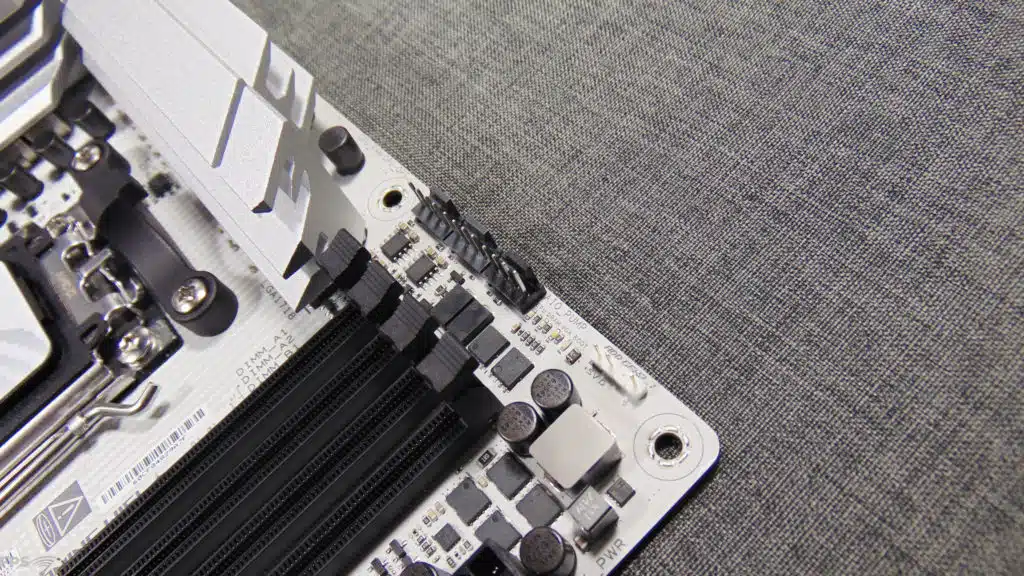
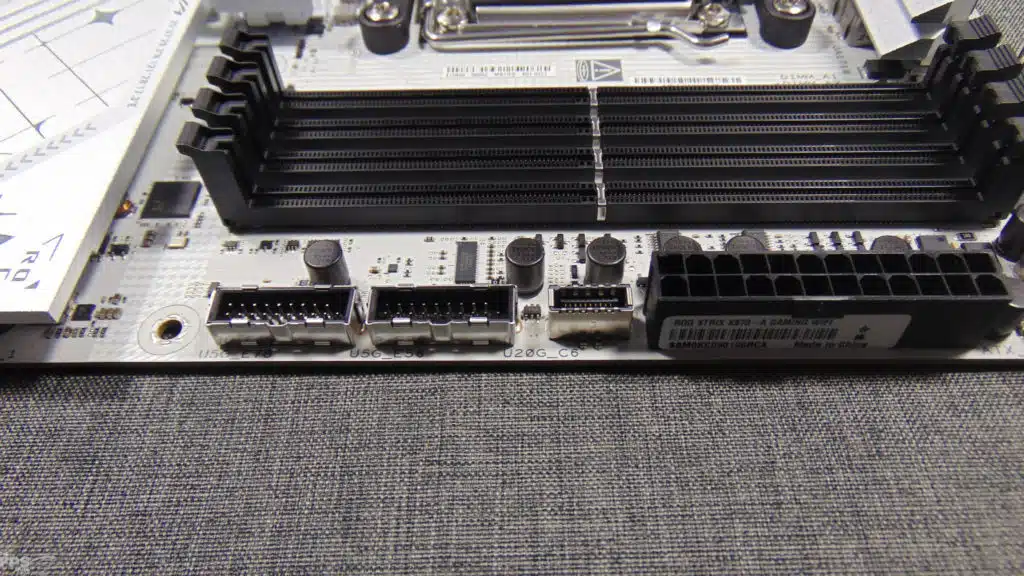
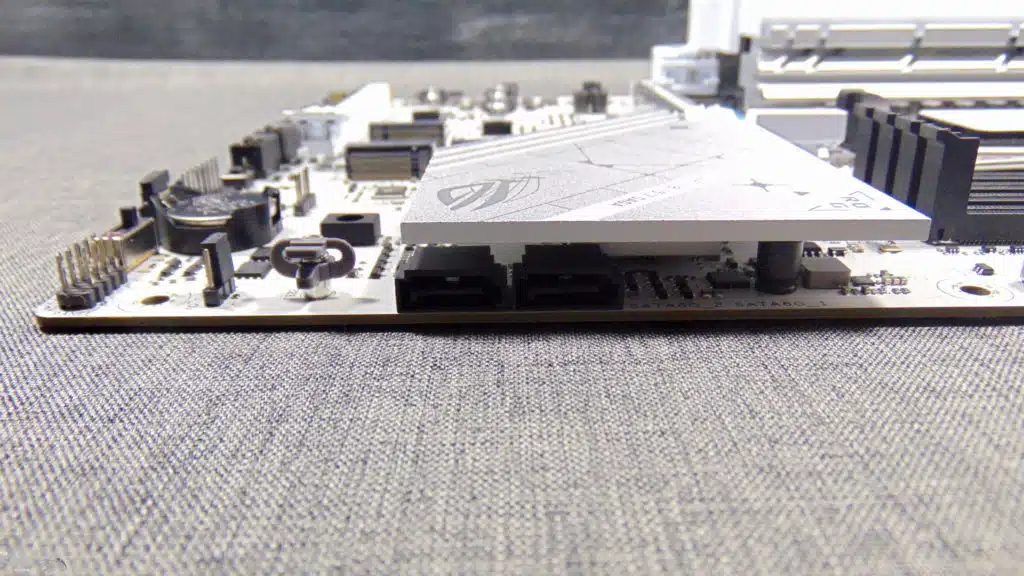
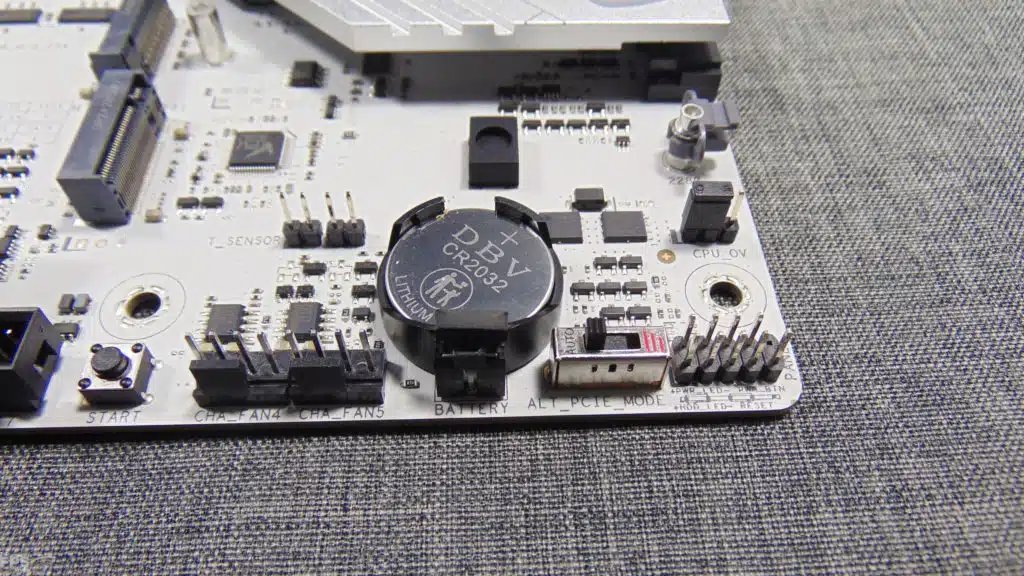


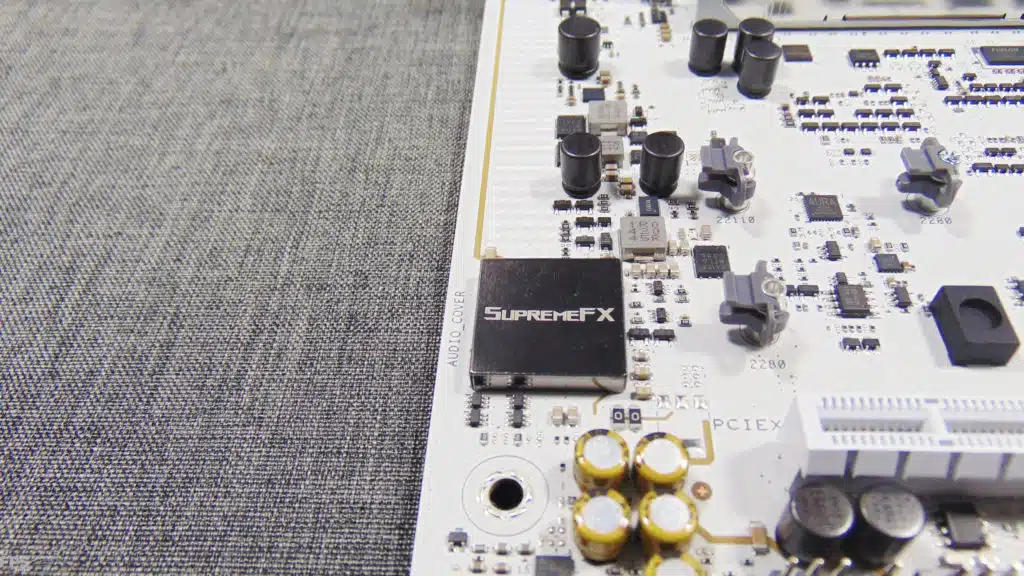
Starting at the top right corner, the ASUS ROG STRIX X870-A GAMING WiFi has a CPU_FAN header, a CPU_OPT header, and an AIO_PUMP header. Something to note about the CPU and FAN headers, all of them are controlled with ASUS Q-Fan control and support up to a max power of 12W and 1A. The AIO_PUMP runs at full speed by default.
The ASUS ROG STRIX X870-A GAMING WiFi also features ASUS Q-LED, which are troubleshooting lights to inform you of CPU, RAM, graphics card, and storage device issues, and if they are functioning normally during bootup, you’ll be able to tell which component booting is getting hung on if there are problems with say RAM, for example. There is also an addressable Gen2 RGB header here as well.
Moving down the right side is a USB 20Gbps Type-C front panel connector, and two USB 5Gbps headers. Toward the bottom on the right side are two SATA connectors, and the CPU_OV (CPU Over Voltage) jumper. The CPU Over Voltage header allows you to set a higher CPU voltage for a flexible overclocking system.
Moving to the bottom, on the right side you’ll find the front panel system header. There is also an Alteration PCIe Mode switch. This switch allows you to switch the PCIe signal which comes from the CPU from between Gen4 or Gen3 for the PCIe slot. By default, it is on Auto, you can switch it to 1st step which changes the signal from the CPU to Gen4, and the 2nd step switches to Gen3. There is a corresponding LED light, which lights up to inform you which step it is in.
This motherboard also has an easy start button, to boot up the motherboard and computer without having to jumper pins, if you are working on your system out of the case. There is also a thermal sensor input on the motherboard, to plug in a thermal sensor probe for detecting the temperature of any device. There are five PWM chassis fan connectors at the bottom of the motherboard. There are also two USB 2.0 headers. You’ll find a chassis intrusion header, and two more addressable Gen2 RGB headers as well as front panel audio.
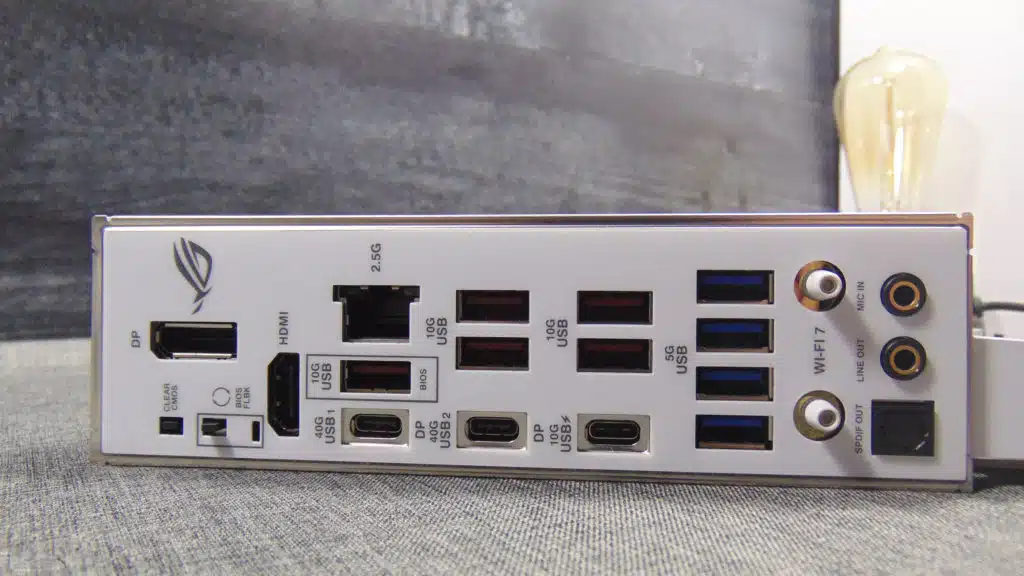
The ASUS ROG STRIX X870-A GAMING WiFi has a pre-installed I/O shield. USB4 support is the name of the game with AMD X870 and the new ASUS ROG STRIX X870-A GAMING WiFi. There are three Type-C ports on this motherboard, on the rear I/O. Two of those Type-C ports support up to USB 40Gbps USB4, while the third one supports up to USB 10Gbps with up to 30W PD Fast-charge. Right under the 2.5G LAN port is a USB 10Gbps Type-A port. To the right of it, you’ll find two more USB 10Gbps Type-A ports, and right beside them to the right are yet two more USB 10Gbps Type-A ports.
On the right column, with all the blue ports, are USB 5Gbps Type-A ports. Then you have the WiFi antenna ports, and audio jacks as well as S/PDIF. To the very left are both a DisplayPort and HDMI port. You’ll also find a Clear CMOS button and a BIOS FlashBack button.
So, if you have lost count, on the rear, there are 2x USB4 40Gbps Type-C ports, 1x USB 10Gbps Type-C port, 5x USB 10Gbps Type-A ports, and 4x USB 5Gbps Type-A ports. Both USB4 Type-C ports have DisplayPort alternate mode, and you also get a dedicated DisplayPort and HDMI output as well.
Then, for the front panel you have 1x USB 20Gbps connector that supports USB Type-C, and 2x USB 5Gbps headers for up to 4 additional USB 5Gbps ports, and then 2x USB 2.0 headers that support up to 4 additional USB 2.0 ports.
The network interface is using the Intel Ethernet Controller I226-V for 2.5Gbps LAN support. WiFi 7 is handled by the MediaTek MT7925 Wi-Fi 7 Wireless Network Adapter. AUDIO is handled by the ASUS ROG SupremeFX 7.1 Surround Sound High Definition Audio CODEC ALC4080 and Savitech SV3H712 AMP and uses SupremeFX shielding technology and supporting Dolby ATMOS.
UEFI
The ASUS ROG STRIX X870-A GAMING WiFi uses a 256Mb Flash ROM UEFI AMI BIOS. We updated our motherboard to the latest BIOS supplied by ASUS for evaluation, which was BIOS version 0501 dated 9/12/2024 and based on AGESA Version ComboAM5PI_1202.
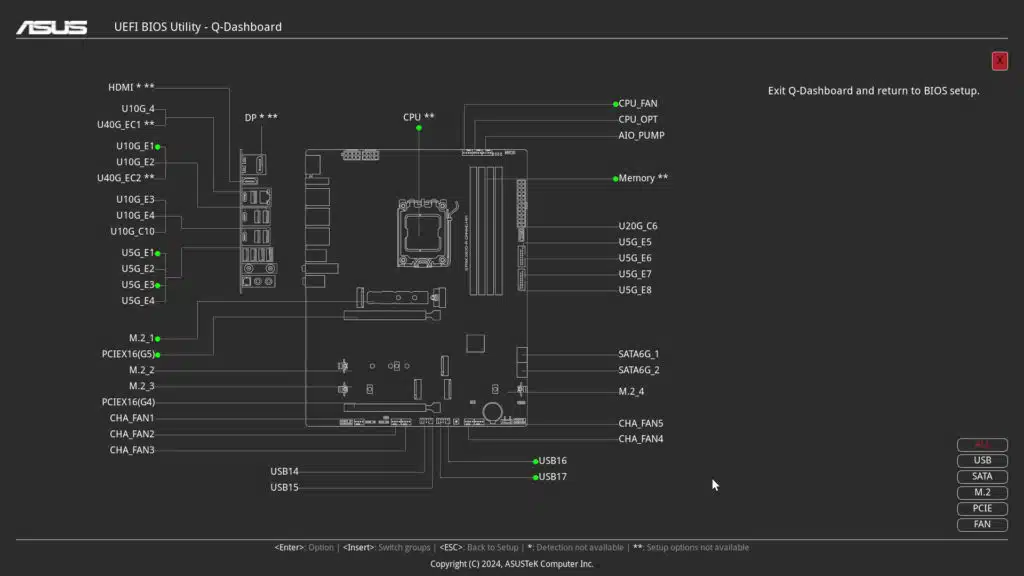
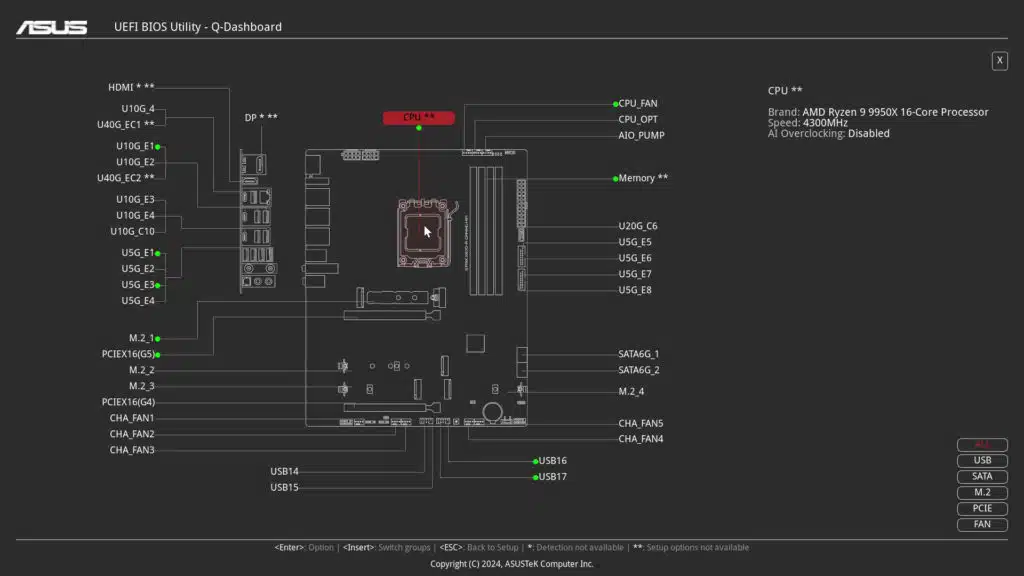
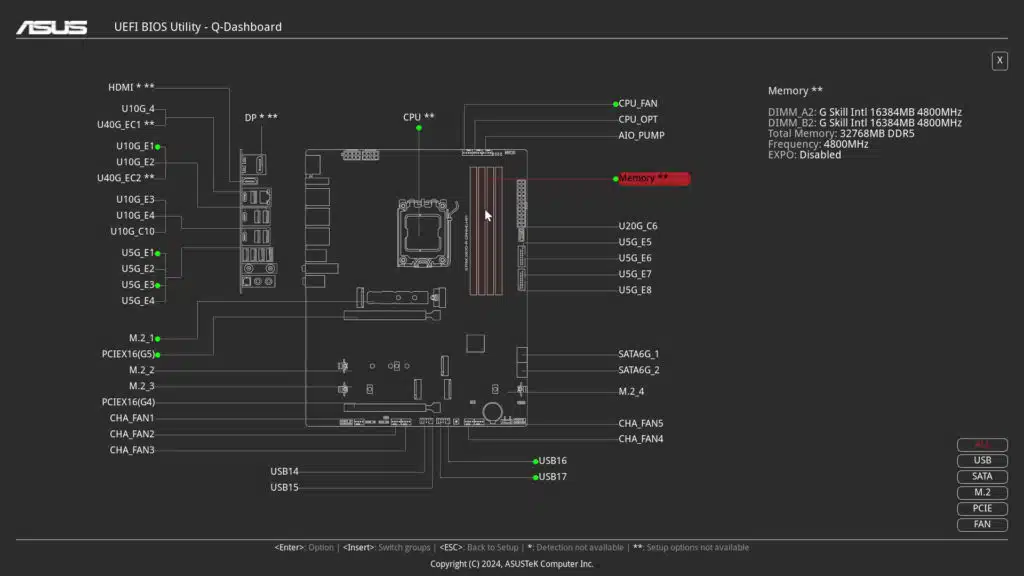

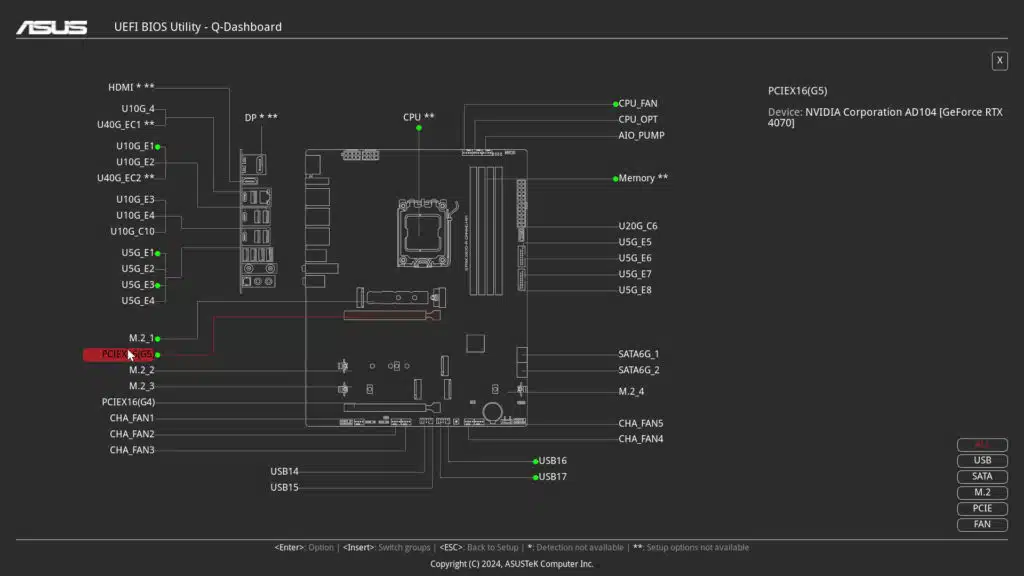

ASUS has a unique feature in its UEFI, which is called ASUS Q-Dashboard. It visually displays all the components connected to your motherboard. You are able to select the different connections and see what devices are connected to each interface. It is quite an intuitive, and informative tool which allows you to figure out how your devices are connected, and through what interfaces. It’s a great way to find out what is in your system without having to crack the case.
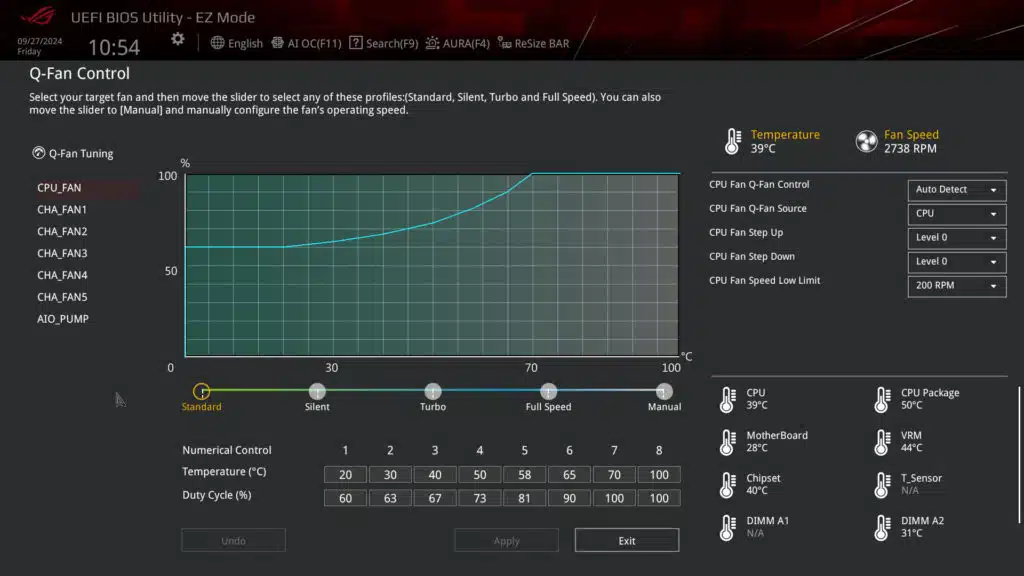
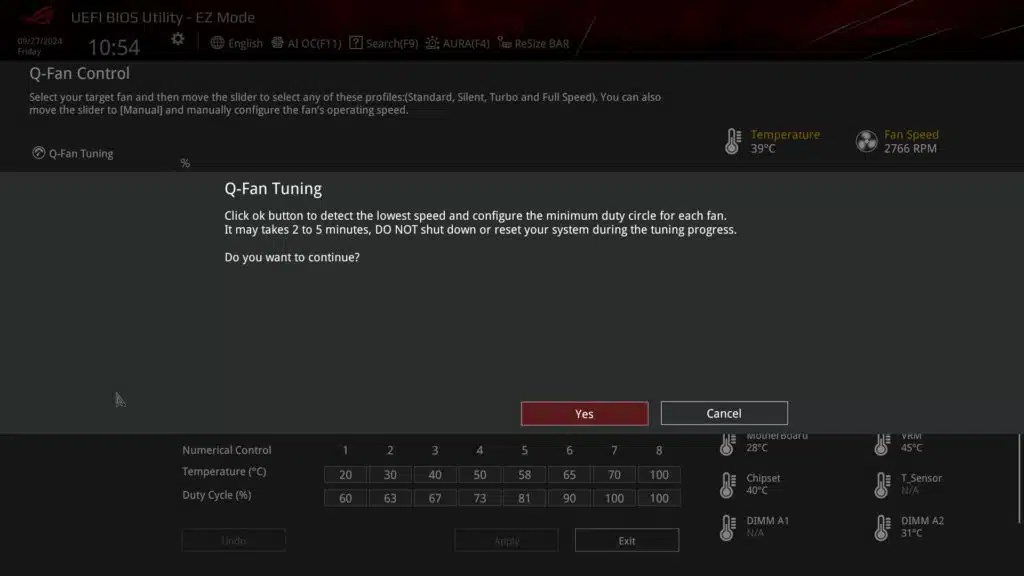
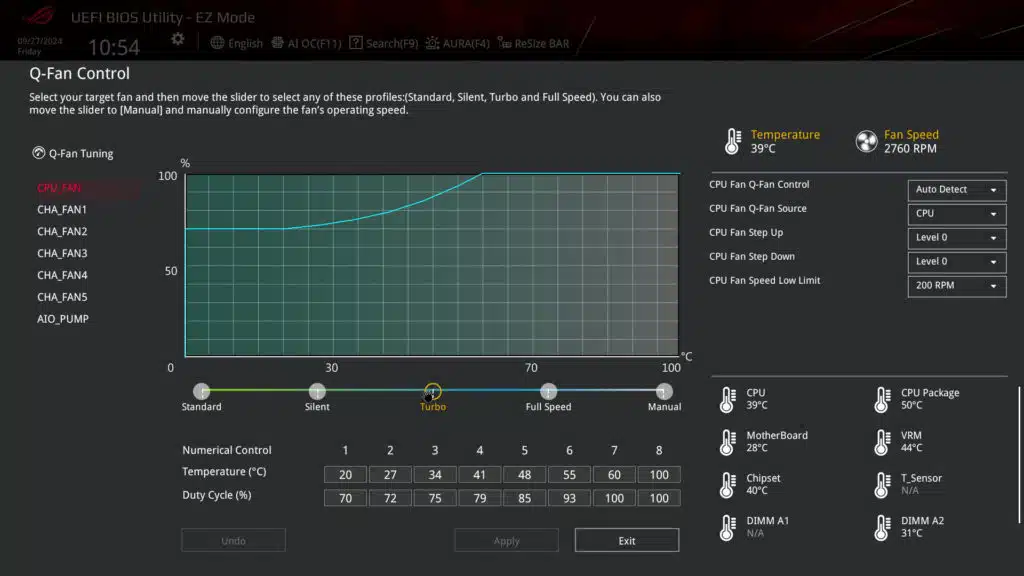

The ASUS ROG STRIX X870-A GAMING WiFi uses ASUS Q-Fan control, which allows you to select each fan header and enable built-in profiles, or customize your own fan curves quite easily. The visuals are quite easy to understand. Q-Fan also has a feature that will automatically detect the lowest speed and configure the minimum duty cycle for each fan automatically.
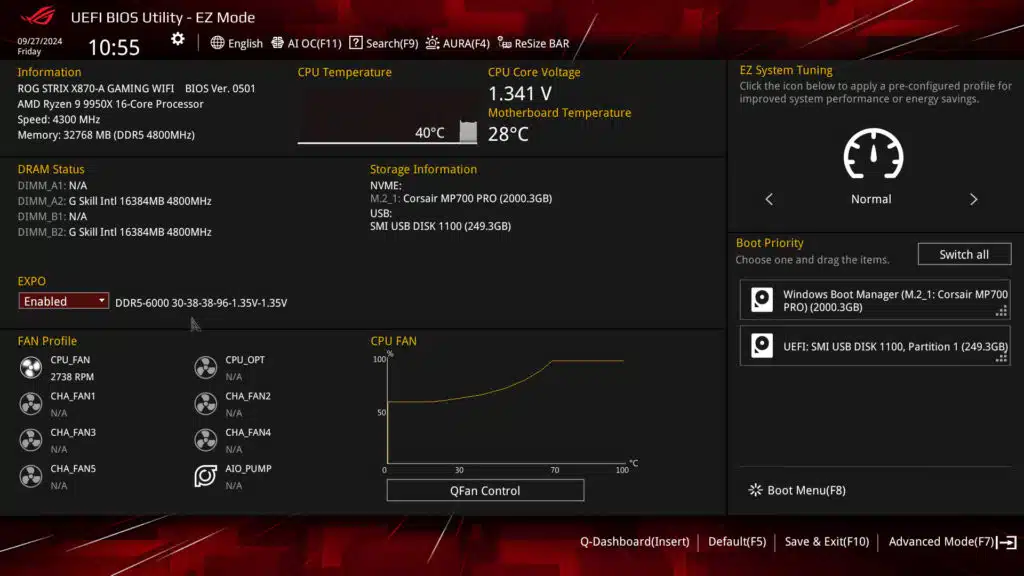
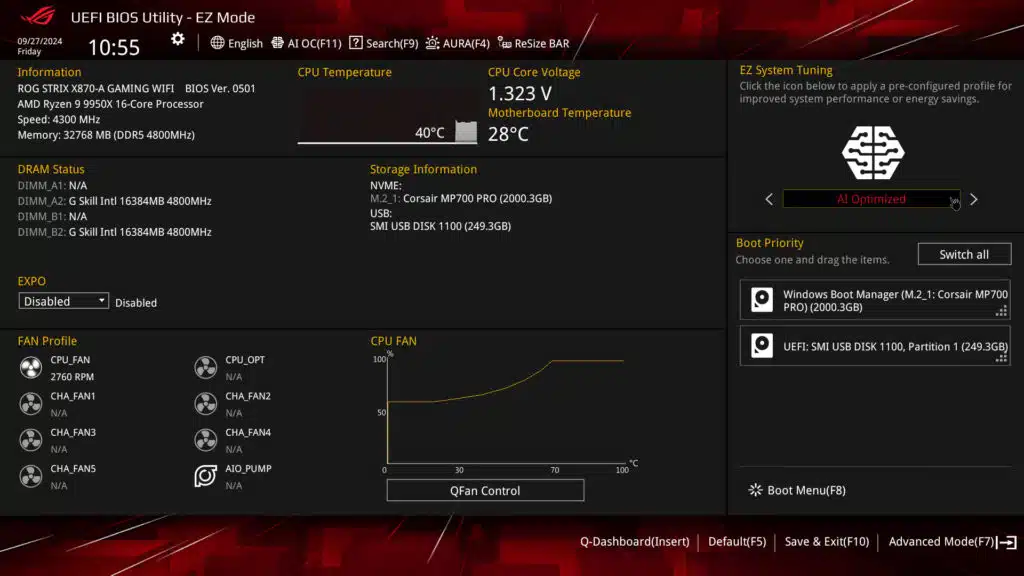

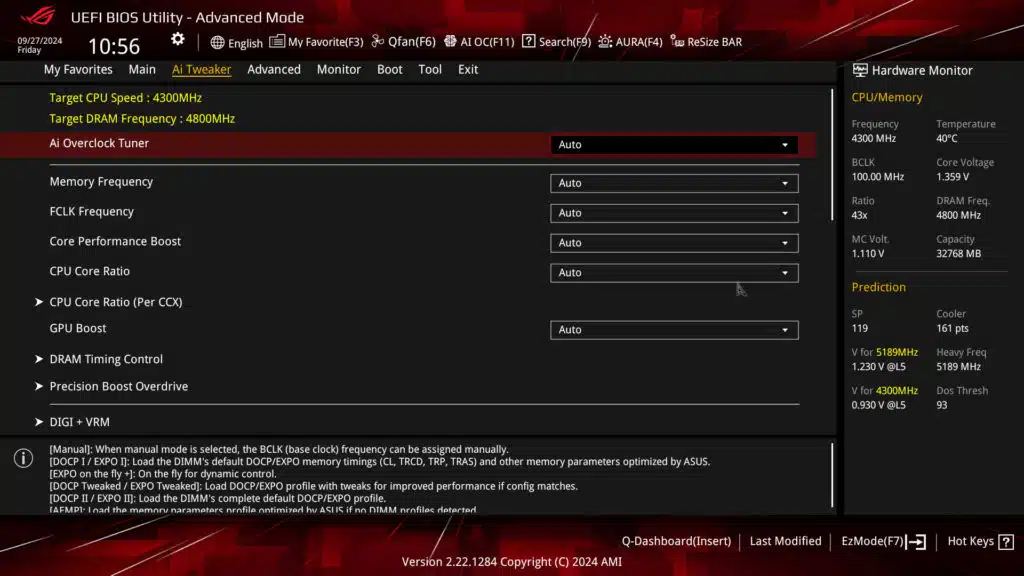
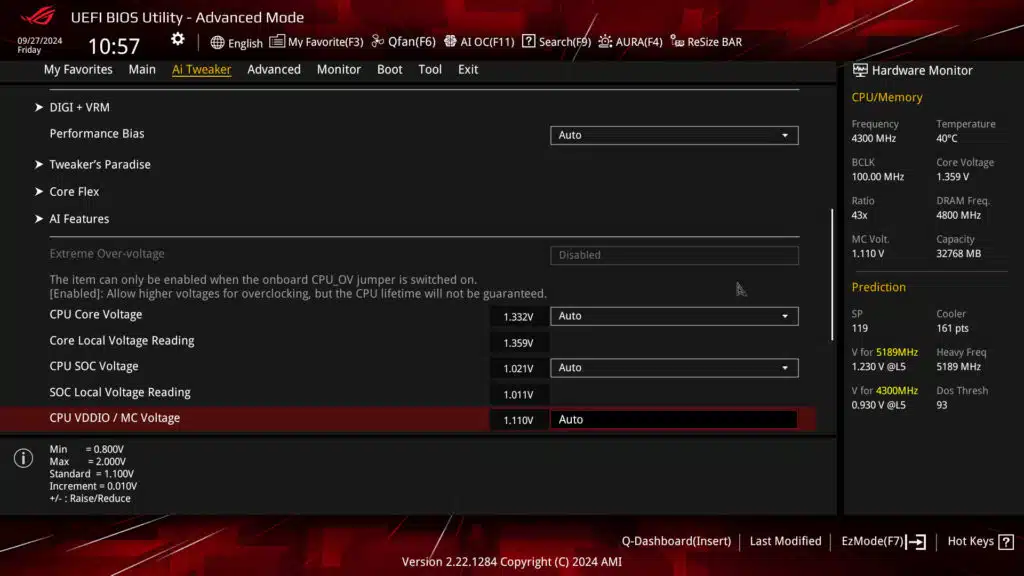
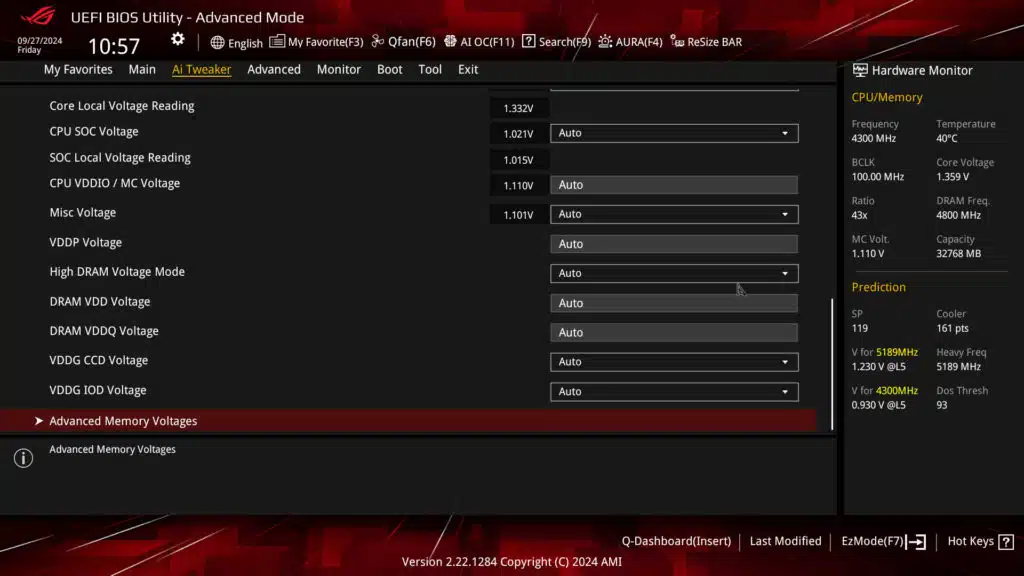
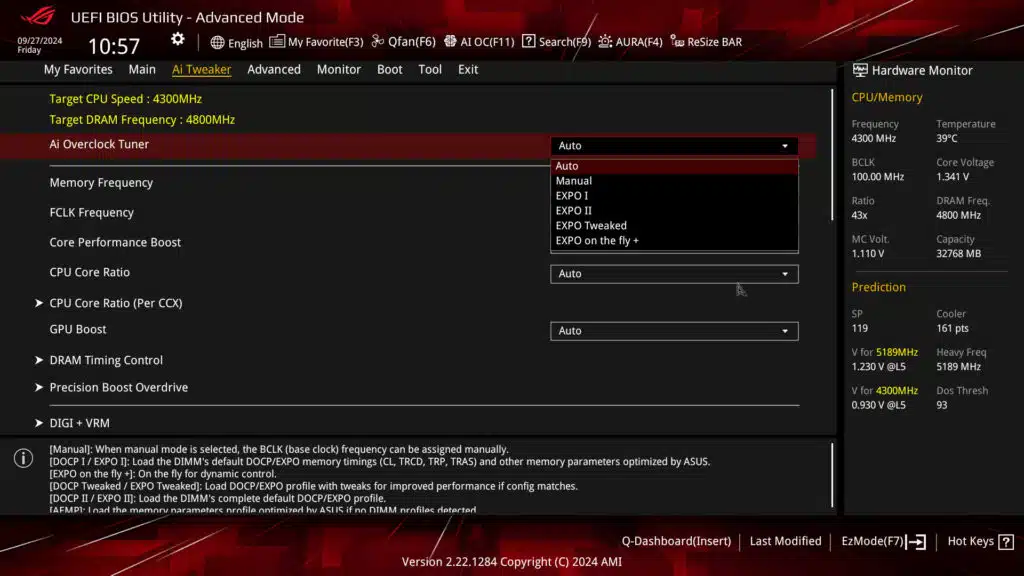
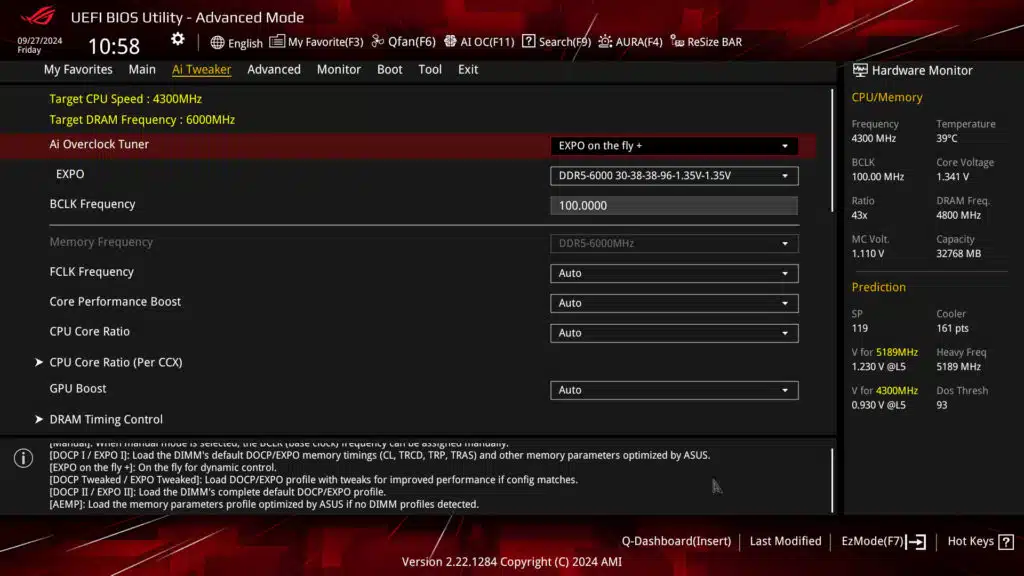
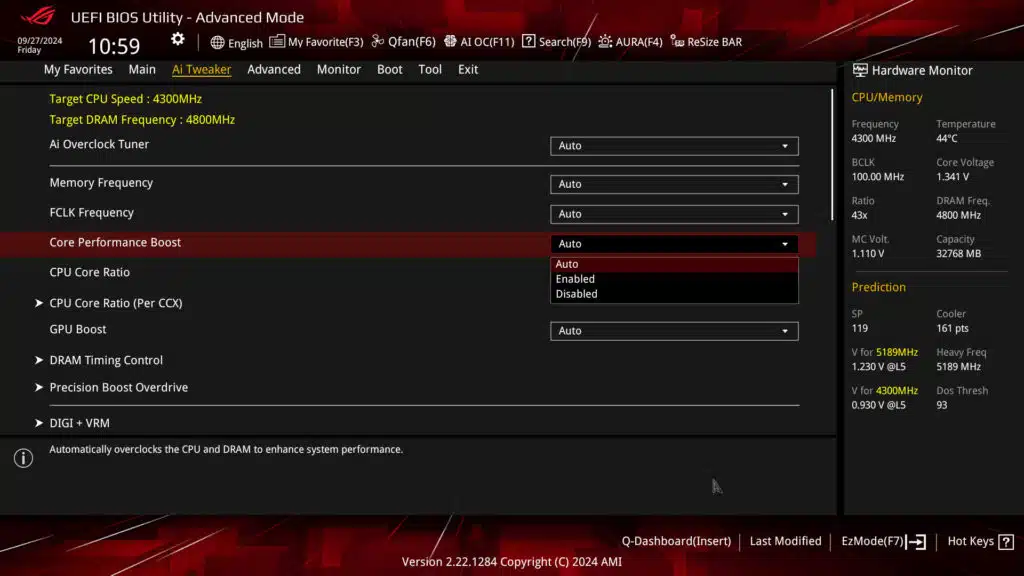
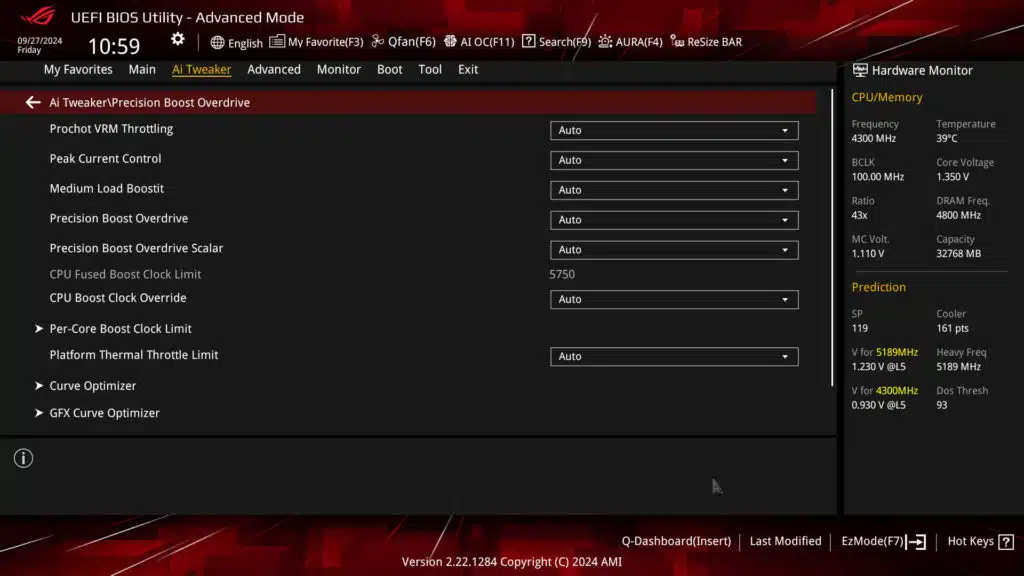
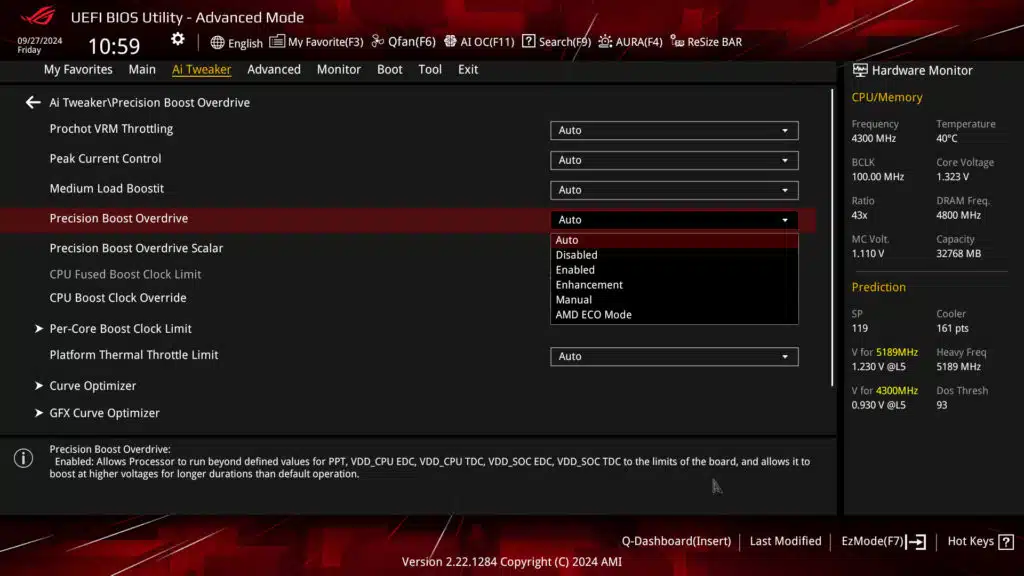
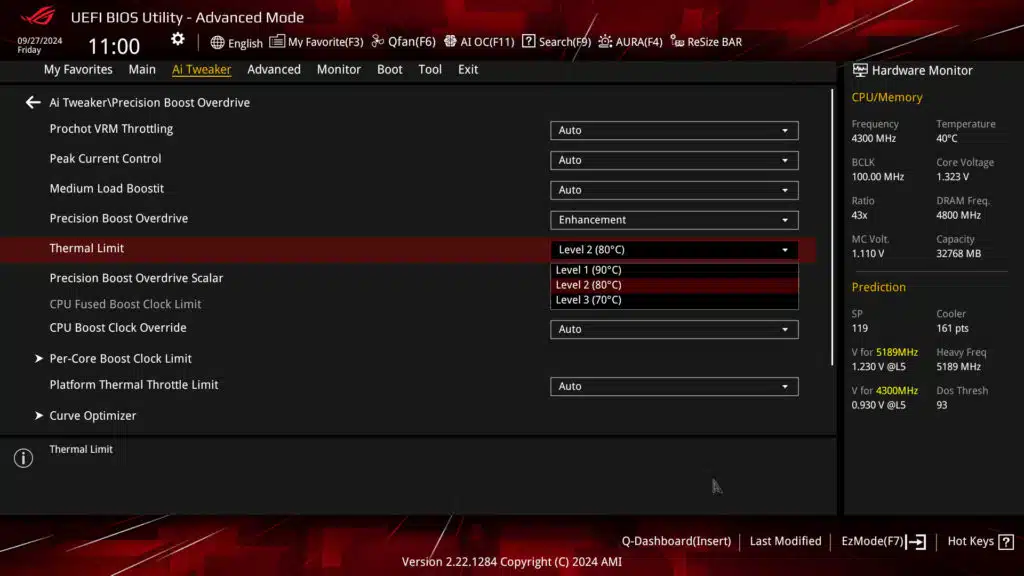
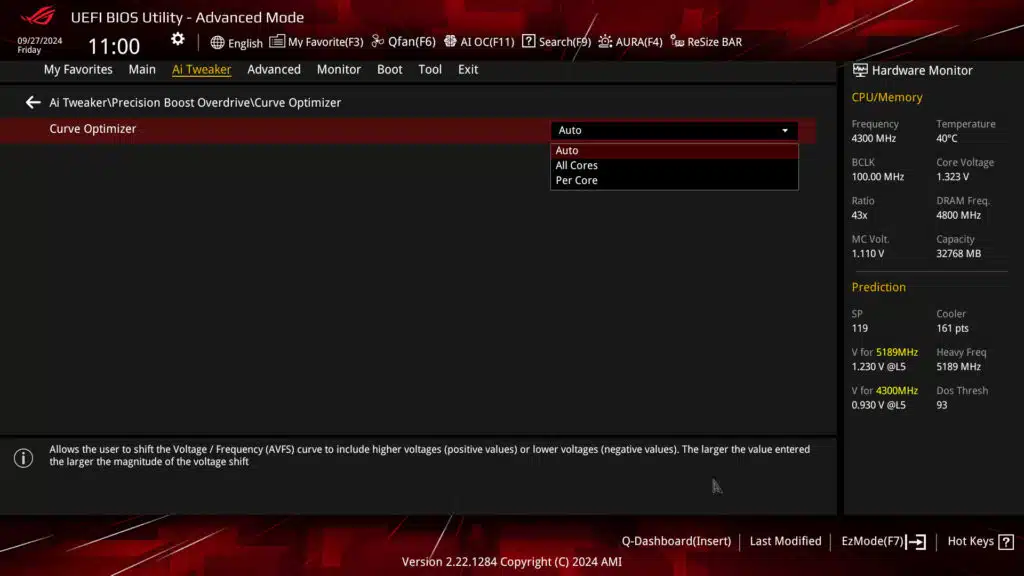
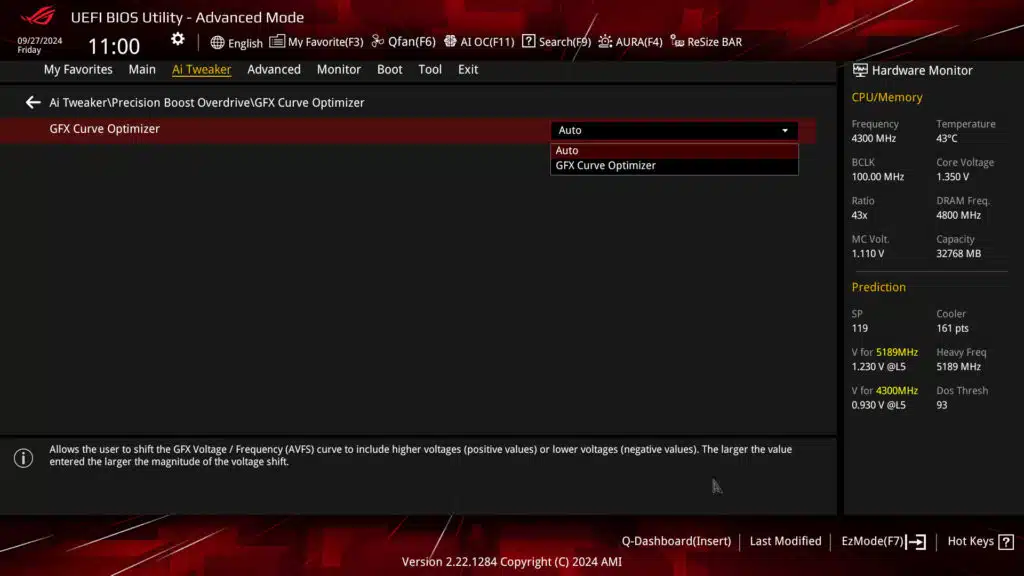
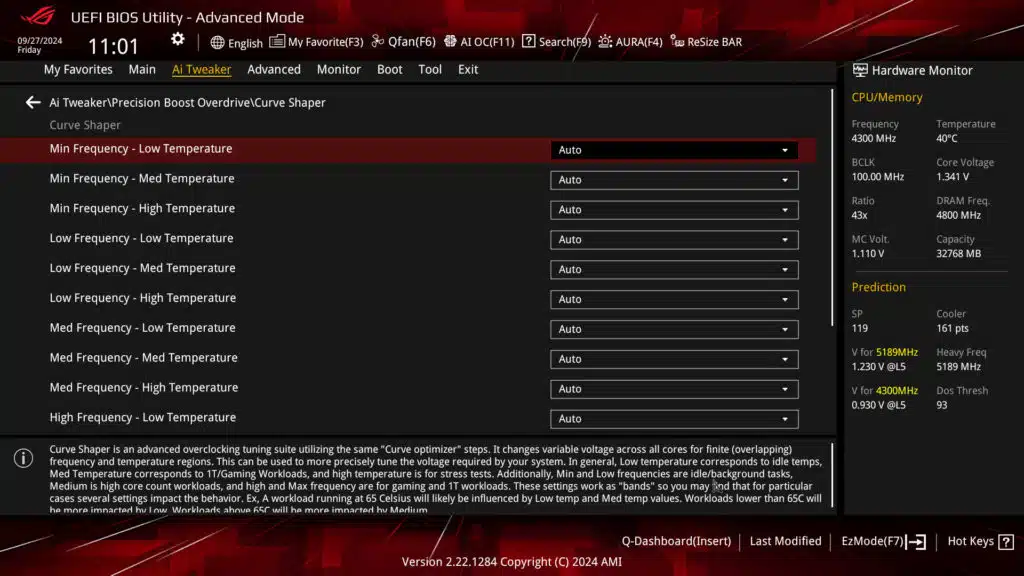




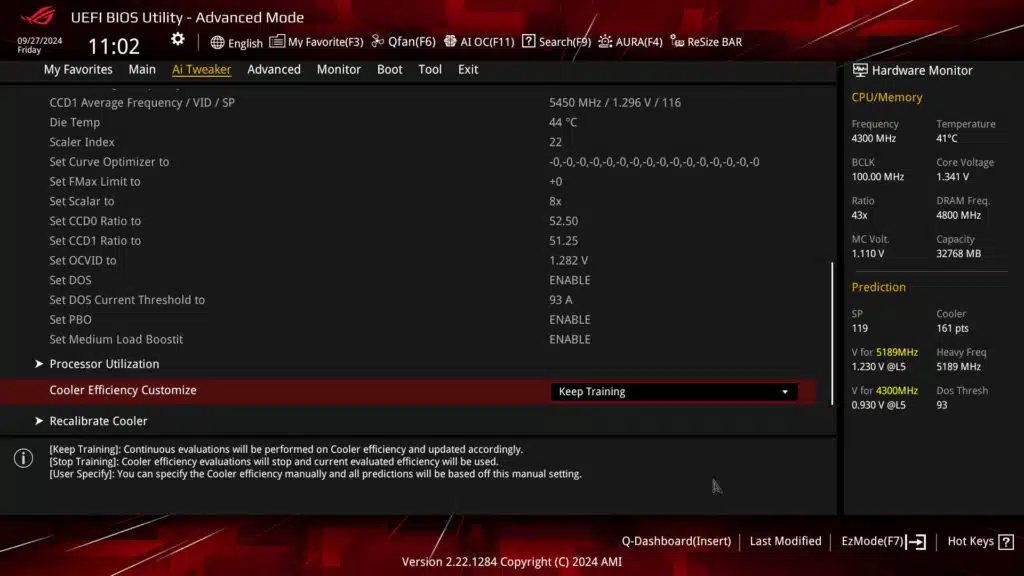


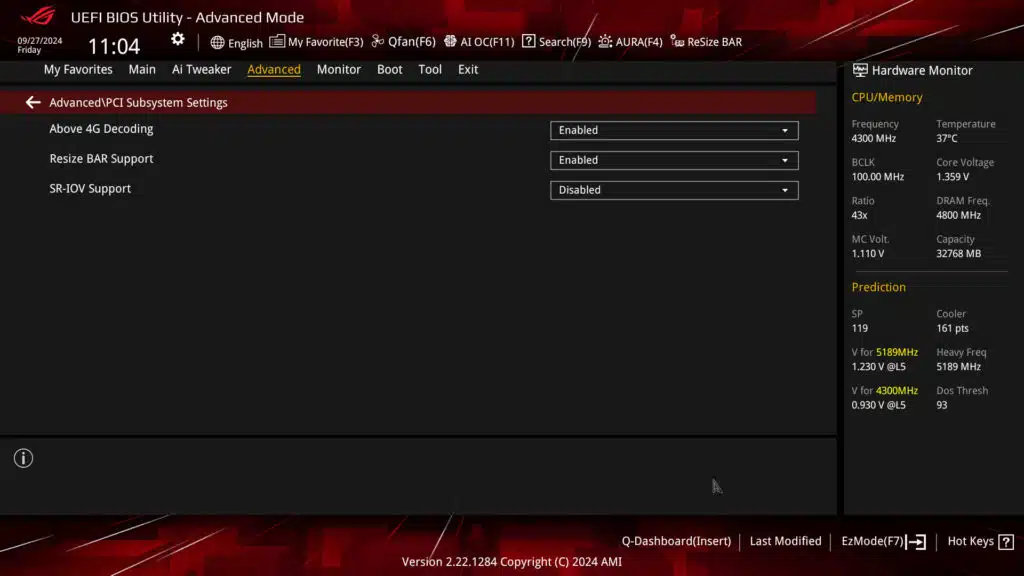
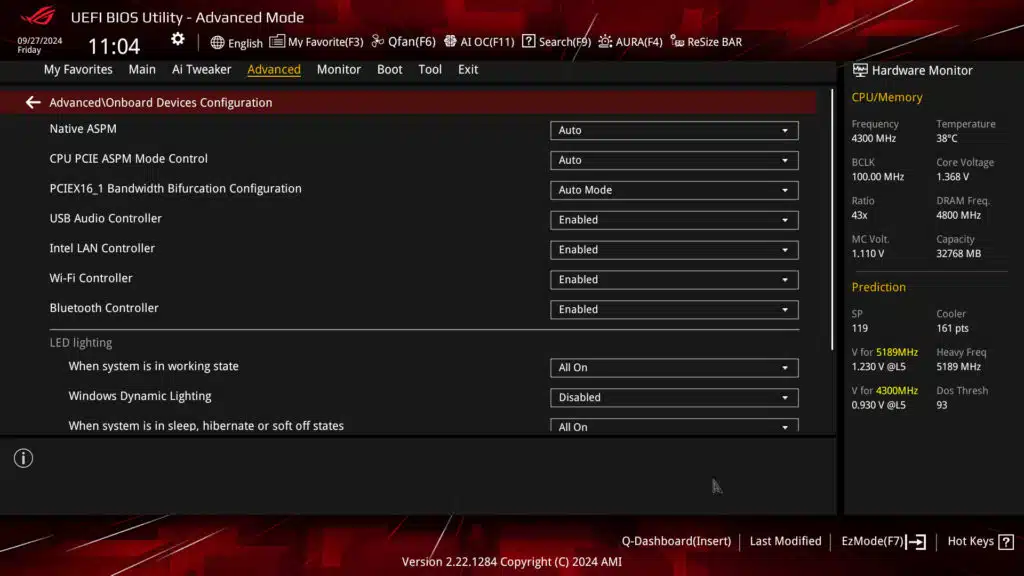
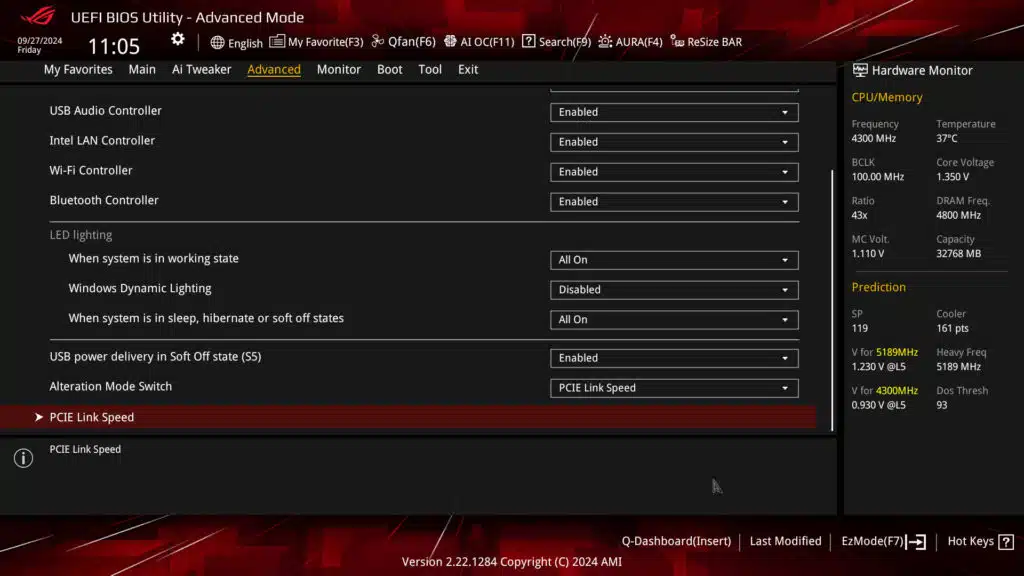
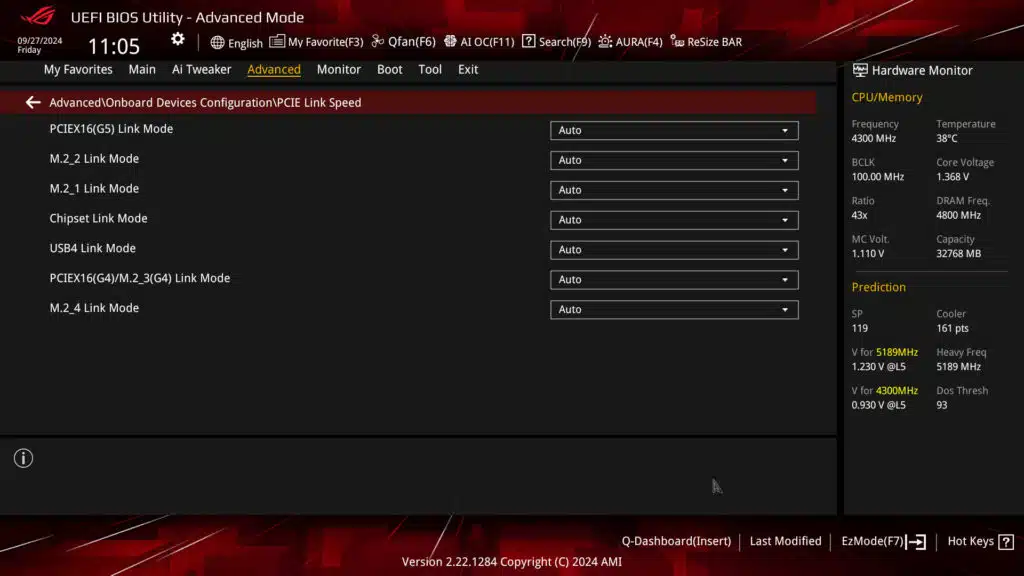
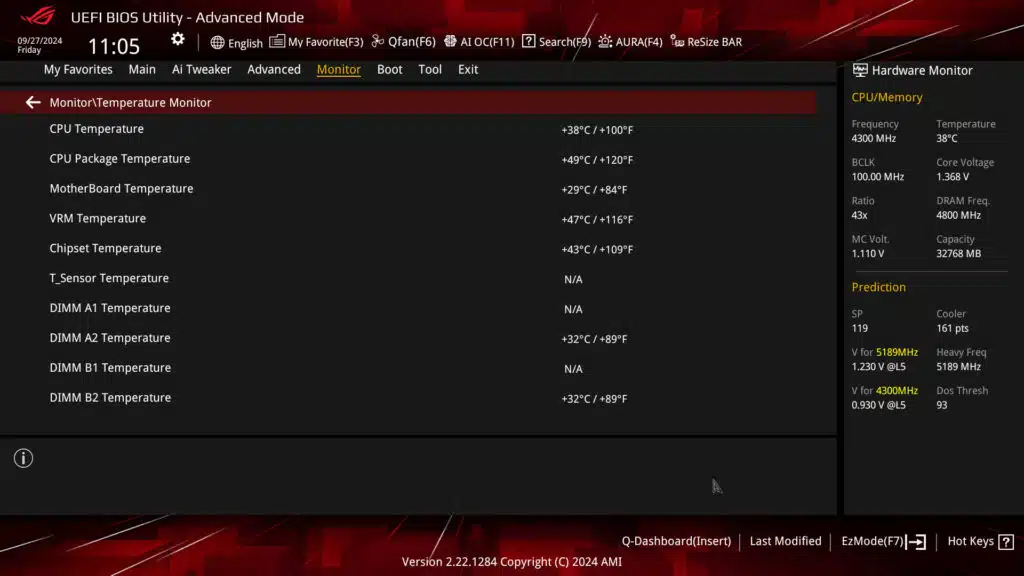
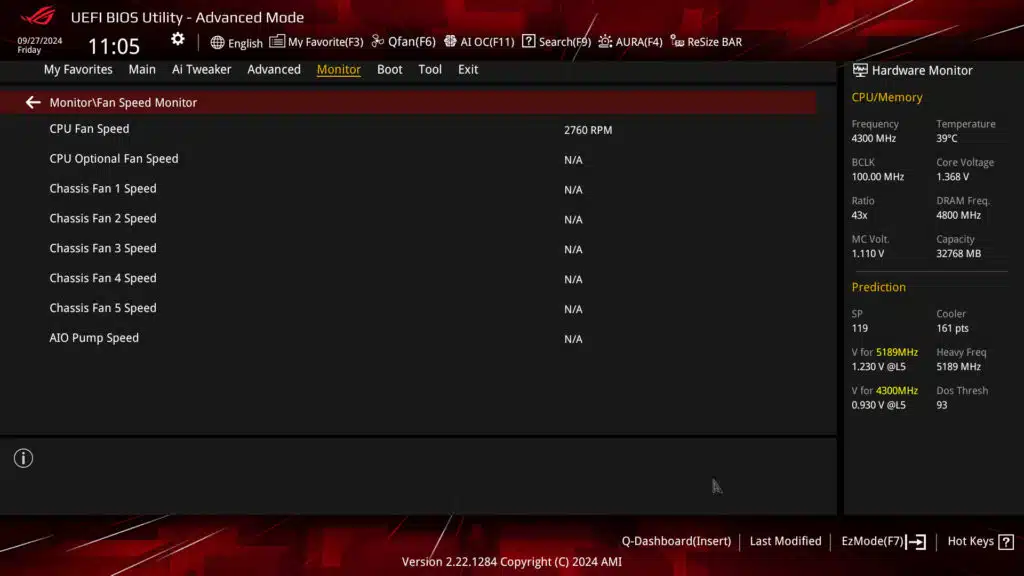
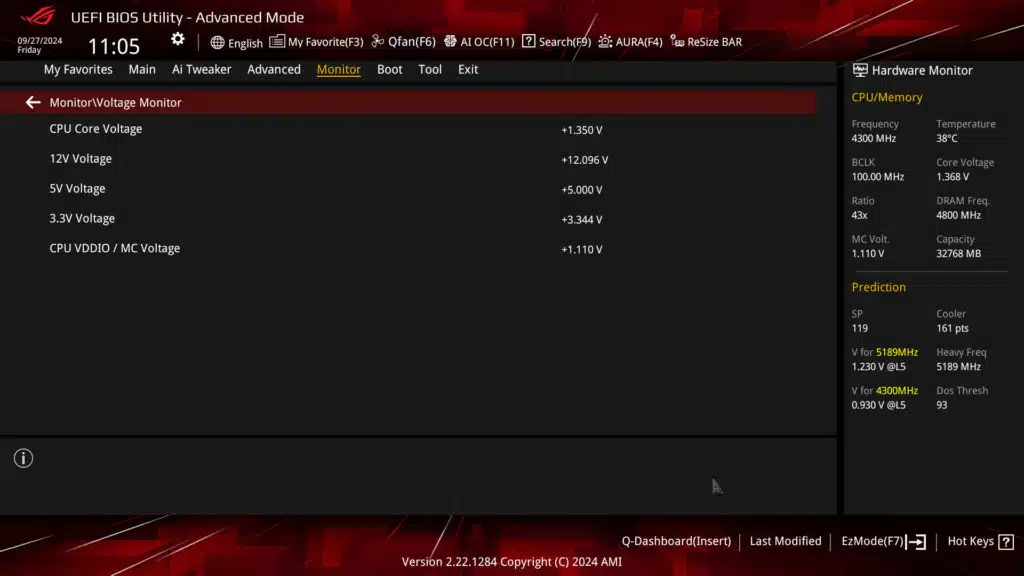
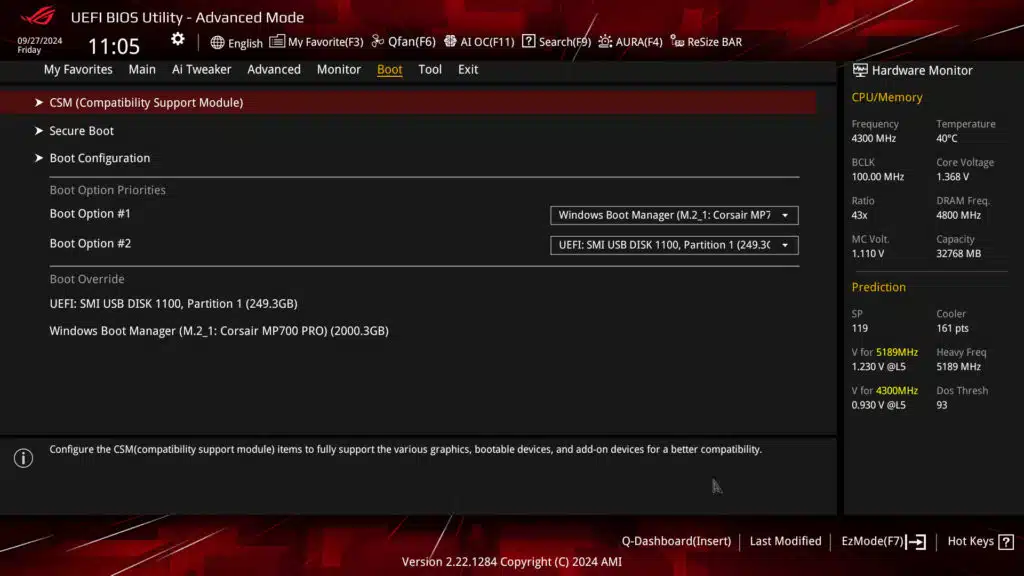
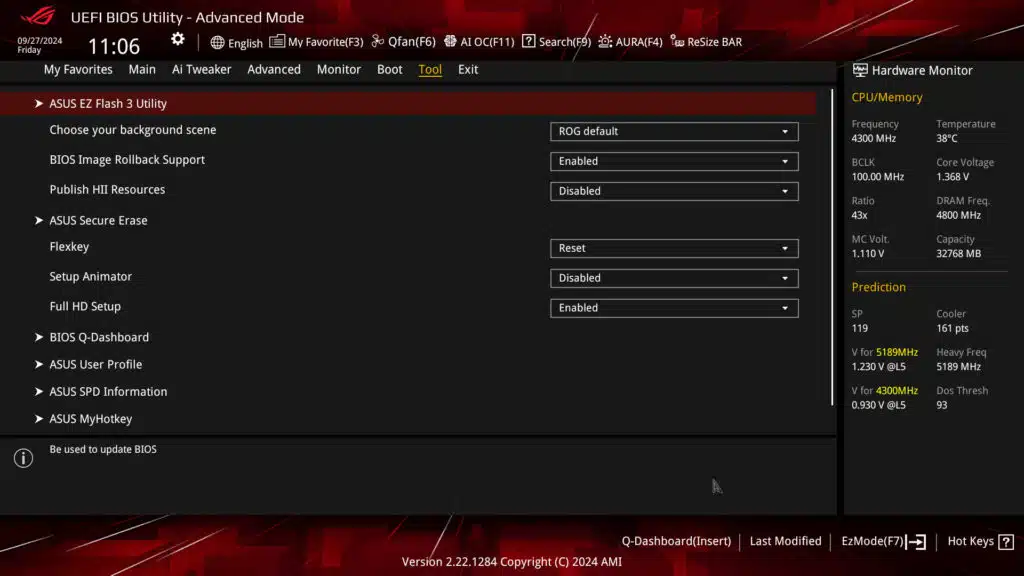
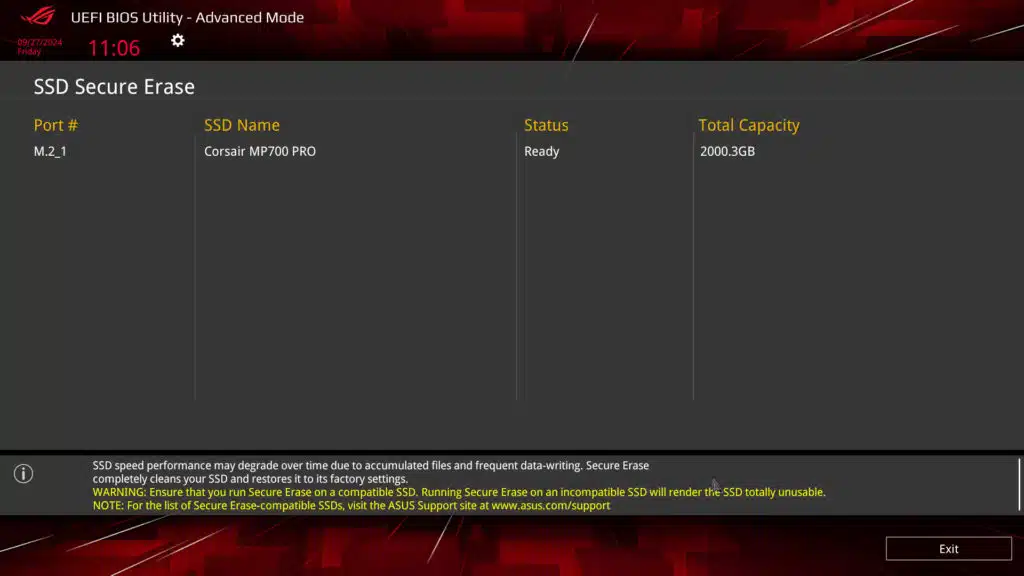
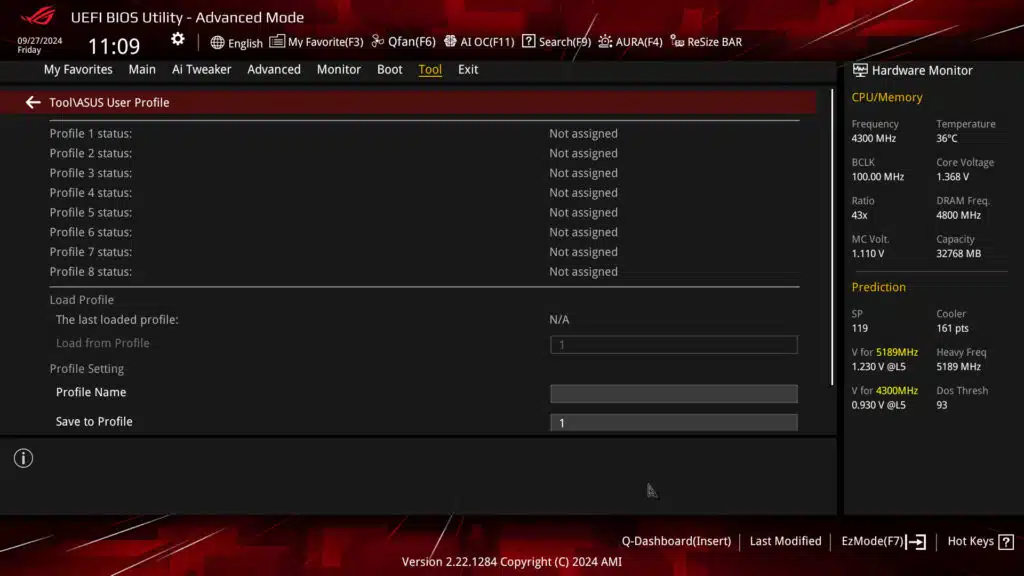
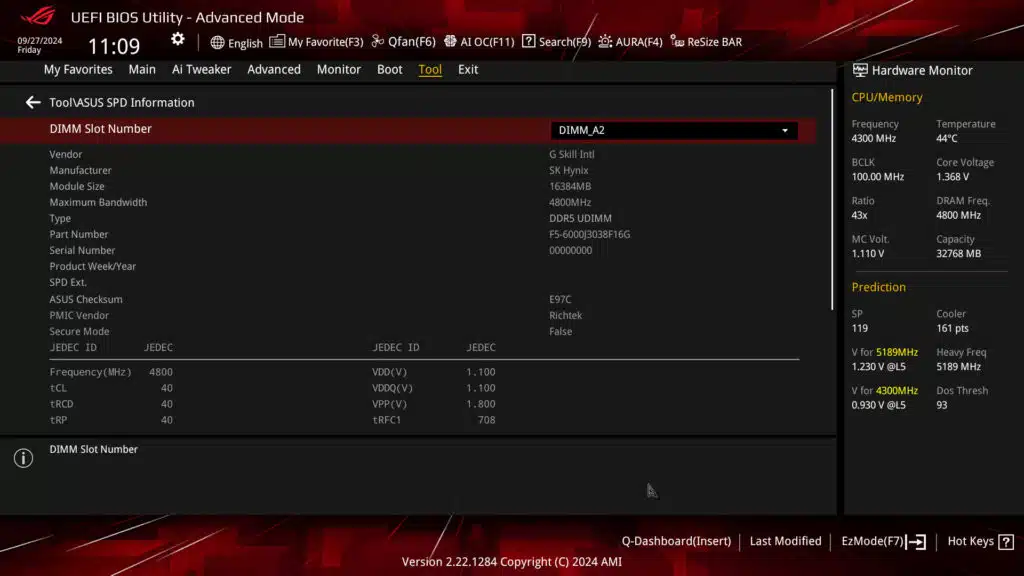
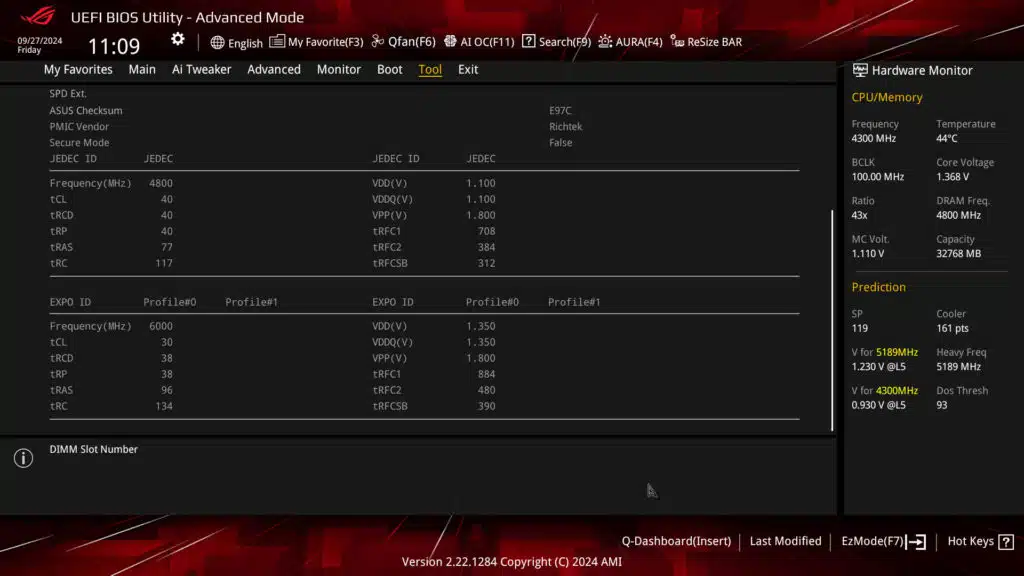
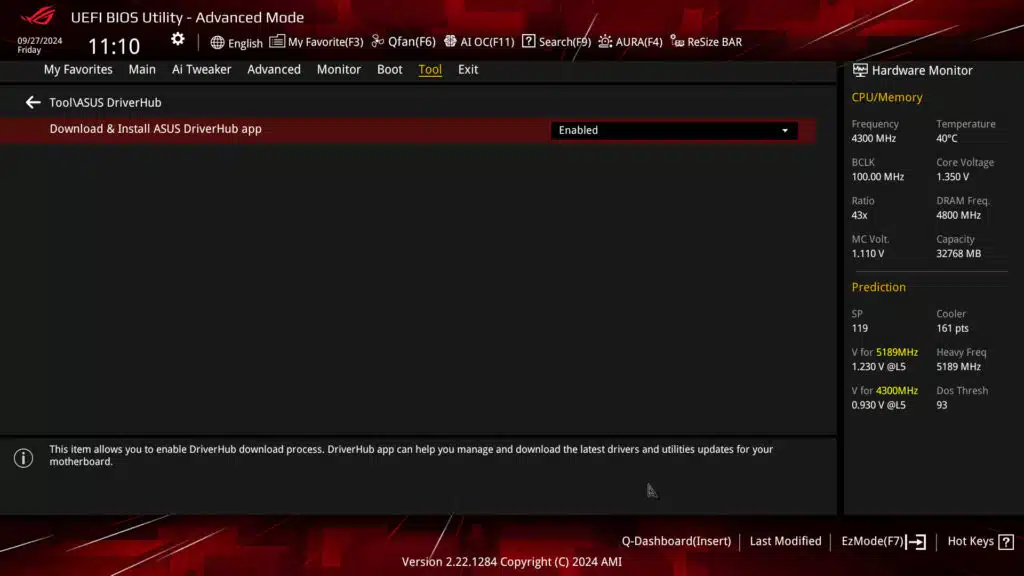
The ASUS ROG STRIX X870-A GAMING WiFi has two modes, an EZ Mode and an Advanced Mode. In the EZ Mode, you can select an ASUS EZ System Tuning option called AI Optimized with AI Overclocking, AI Cooling II, AI Networking II, and AEMP to simplify setup and improve performance. Other overclocking features include Dynamic OC Switcher, Core Flex, Asynchnorous Clock, and PBO Enhancement. ASUS AI Overclocking profiles the CPU and cooling to predict the optimal configuration.
ASUS AEMP is also supported, which detects the memory and presents optimized frequency, timing, and voltage profiles if you have PMIC-restricted modules. This motherboard also supports the new EXPO on-the-fly feature, to dynamically adjust DDR speeds based on the load, a new feature with these chipsets.
There are many other overclocking-focused features at play here, such as Asynchronous Clock which is a built-in clock generator that isolates the CPU base clock from memory, PCIe, and the Infinity Fabric speed to drive up CPU performance. There is also Core Flex to manipulate power, current, and temperature limits independently, and just a whole suite of ASUS-specific features with tweaking and overclocking in mind on this motherboard.
M.2 Performance
To test M.2 performance, we are using a CORSAIR MP700 PRO with Air Cooler 2TB PCIe Gen5 M.2 NVMe SSD on every M.2 socket to test performance. We also tested what would happen if we have an SSD installed into the M.2_2 slot at the same time, and what would happen to the GPU Slot lane bandwidth with a Silicon Power XS70 2TB PCIe Gen4 M.2 NVMe SSD.



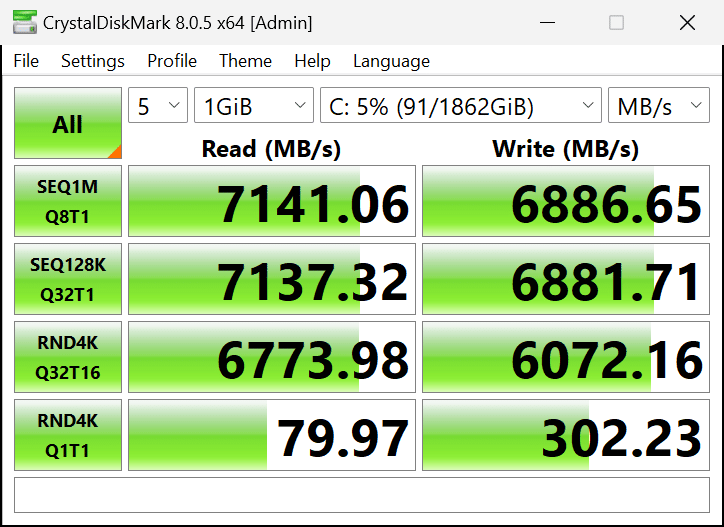
The top left screenshots shows the PCIe 5.0 x4 Gen5 SSD in the primary M.2_1 socket, and we can see that it is hitting its maximum performance which is rated at 12,400MB/sec sequential read and 11,800MB/sec sequential write speeds for the CORSAIR MP700 PRO SSD, this is working perfectly fast at Gen5. In the top right screenshot, we can see that the PCIe 5.0 x4 Gen5 SSD installed into the secondary M.2_2 socket is also hitting Gen5 speeds just fine.
In the bottom two screenshots, the PCIe 5.0 x4 Gen5 SSD is installed into the third M.2_3 and fourth M.2_4 sockets, which support PCIe 4.0 x4 Gen4 speeds, and we can see that the SSD runs at those speeds exactly as intended.
In this GPU-Z screenshot to the right, we can see what happens when a PCIe 4.0 x4 (Gen4) or PCIe 5.0 x4 (Gen5) NVMe SSD is installed in the secondary M.2_2 socket. The primary PCIe x16 GPU slot now becomes a x8 slot, running at PCIe 4.0 x8 for the graphics cards. This proves that anything installed in the M.2_2 socket will downgrade the GPU to x8. We also ran only a Gen4 SSD in M.2_2 socket with nothing else in the primary M.2_1 socket, and even with nothing in M.2_1 socket, the GPU still ran at x8 on the GPU slot.
Memory Bandwidth
We have our 32GB of DDR5 6000MT/s set to EXPO 1 in the UEFI, and we can see above that it is performing as expected with our AMD Ryzen 9 9950X CPU. We are achieving 79GB/s read and 76GB/s write performance, with a latency of 68.1ns. This motherboard is testing well for memory bandwidth and latency performance.
PCMark 10
Cinebench R23
Blender Benchmark
3DMark
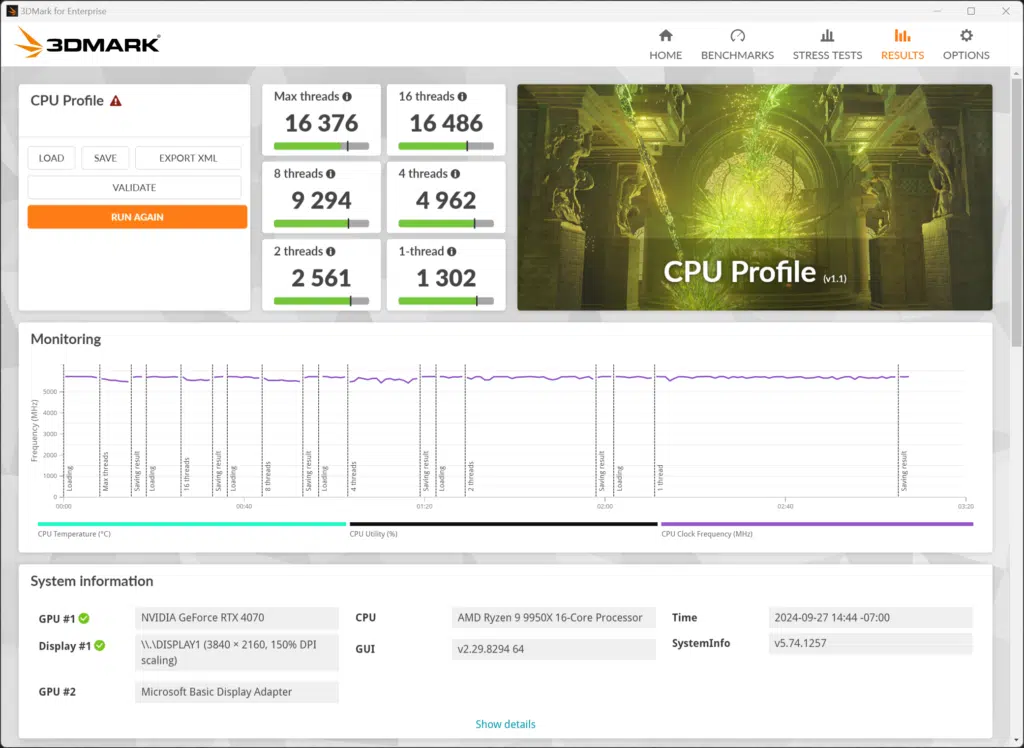
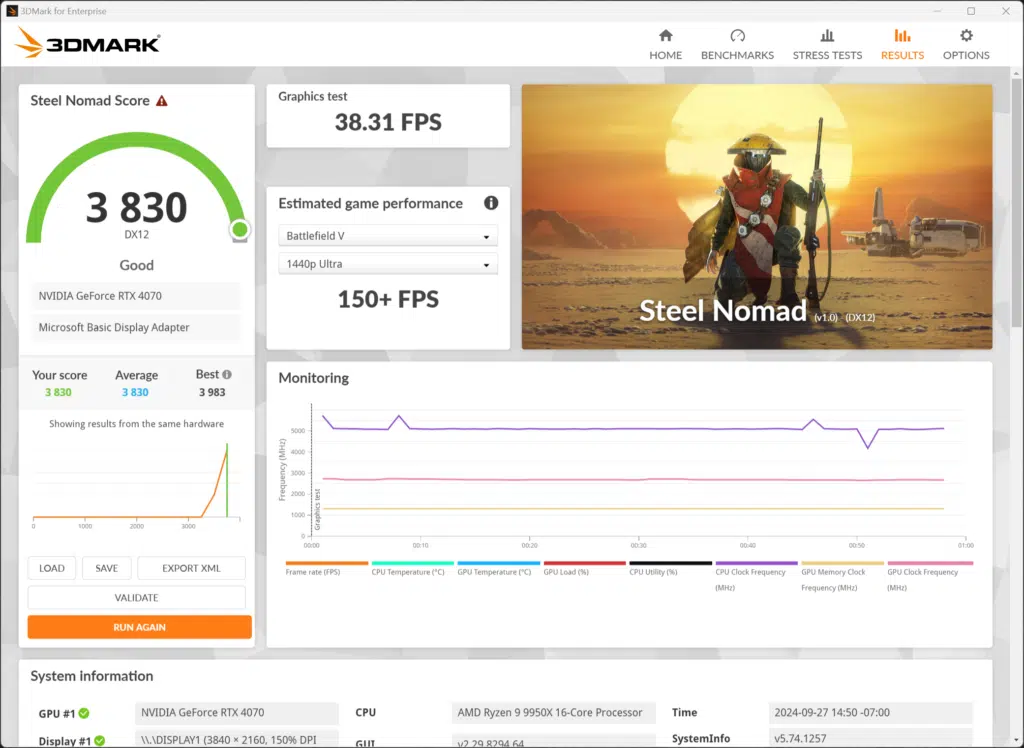
In 3DMark we ran the CPU Profile test to look at the Ryzen 9 9950X performance in Max Threads, and 1-thread performance, and we ran the Steel Nomad 3D test with our GeForce RTX 4070 FE. The Max Threads performance was at 16,376 and the 1-Thread at 1302, these results are great. The Steel Nomad score was 3830, which was on the high end of performance.
V-RAY 6 Benchmark
VRM Temperature
We are testing temperatures on our ASUS ROG STRIX X870-A GAMING WiFi with an AMD Ryzen 9 9950X CPU, running Cinebench R23 looping for 20 minutes. From these results, the MOSFET temperature reading isn’t exactly clear, as many of the temp sensors remain unlabeled in HWiNFO64 at this time, so we aren’t entirely sure what they are reading, and neither does HWINFO64.
The ones we can be sure of are that the motherboard temperature peaked at just 30c, which is likely the ambient temperature around the motherboard or some component. The chipset reached 43.8c maximum, which is on the cooler side compared to some other motherboard testing. There is one component that is reaching 94c, but again we don’t know exactly what that is.
Since we didn’t know exactly what sensor was referencing what component, we opted to utilize an external laser temperature gun. Taking peak readings of the large primary heatsink for the VRMs, the heatsink surface itself (on the surface) reached up to 44c. The smaller heatsink on the VRMs to the north of the CPU on its surface, reached a temperature of up to 45c.
Take from that, what you will, it seemed to be cooled decently enough in this area for a 9950X running at full-throttle. The CPU Core Clocks remained stable, and we didn’t see signs of throttling, the average clock speed was 4.678GHz, and the maximum hit 5.620GHz on boost, indicating a very good clock speed at full-load for more than 20 minutes.
Conclusion
The ASUS ROG STRIX X870-A GAMING WiFi motherboard packs a lot of features into an enthusiast, overclocking-focused motherboard with the STRIX lineup. Based on the AMD X870 chipset, it offers a fair bit of features for any enthusiast or PC gamer. Based on the AM5 socket, supporting Ryzen 7000 and AMD Ryzen 9000 CPUs with DDR5 at high speeds and capacities, the ASUS ROG STRIX X870-A GAMING WIFI is priced at $369.99 MSRP.
The ASUS ROG STRIX X870-A GAMING WiFi has 4x M.2 expansion, with two of them supporting PCIe 5.0 Gen5 NVMe SSDs, which is fantastic to boast in an X870 motherboard. It also has a full PCIe 5.0 x16 GPU slot as well, for a lot of PCIe 5.0 connectivity. Of course, the claim to fame for the X870 chipset is the required USB4 support, and the ASUS ROG STRIX X870-A GAMING WiFi has it with 2x Type-C ports. You also get WiFi 7 and 2.5Gbps LAN, and a pretty robust VRM configuration for the highest-end CPUs.
Installlation and Use
There is a lot to like about the ASUS ROG STRIX X870-A GAMING WiFi, and a few things worth noting for configurations of M.2 drives. We had an easy time installing our CPU and mounting the AIO, and DRAM, clearances seemed to work well in these areas. Installing the 12V EPS power cables was fine, but we found the edge of the VRM heatsink to be a bit sharp close to it, making it easy to not be very pleasant if scraped.
The M.2 Q-Release system, combined with M.2 Q-Slide and M.2 Q-Latch systems are pretty amazing and work great on this motherboard. We were impressed with the pure solid nature of the primary M.2_1 heatsink, it’s such a solid piece of metal that it should soak up a lot of heat for those hot Gen5 SSDs. It’s chunky, and that’s just what is needed for a Gen5 SSD.
The primary M.2 socket’s heatsink removal and installation is also exceptionally easy, we really like the button push and pop out of the heatsink. When you snap it back into place, it just works smoothly, and you feel confident that it is applying proper pressure to the SSD and thermal pads.
We will call out the rather narrow bottom heatsink and thermal pad, however. For double-sided SSDs, it won’t offer as much cooling coverage on that reverse side as it is typically more narrow than other implementations of bottom heatsinks we have seen. Otherwise, the Q-Latch systems on every M.2 socket is welcomed, and we are glad to see it. Just keep in mind, that the second, third, and fourth M.2 sockets do not have bottom heatsinks.
The other usability feature to discuss is the configurations of M.2 drives. It is impressive to see two M.2 sockets have PCIe 5.0 x4 Gen5 NVMe SSD support on an X870 motherboard. If your primary use is storage-focused, and you need fast drives, this is great. However, the use of a Gen4 or Gen5 SSD in the M.2_2 slot will downgrade your GPU to a x8 lane operation.
This is the downside, and thus could be restrictive for your gaming experience, or for certain workloads that necessitate the usage of high-speed PCIe interconnects with your GPU. In this case, you may forgo using the M.2_2 socket altogether, thus rendering the feature it has, a bit pointless. Also keep in mind, that anything installed in the M.2_3 socket, also completely disables the secondary PCIe x16 (x4 in operation) expansion slot as well. Therefore, if you use a second expansion card, you will not be able to utilize the M.2_3 socket at all. Just be aware of these facts.
The other usability feature we really like is the PCIe Slot Q-Release Slim on the primary expansion slot. Never have we removed a video card as easily as this. Simply pulling up on the edge, at an angle, detaches the video card from the slot and it easily picks right up. We don’t have to reach down and fumble with any level, or button, or switch, it is the easiest removal we’ve ever encountered.
Final Points
Overall the ASUS ROG STRIX X870-A GAMING WiFi sits well in ASUS’s lineup for this refresh of motherboards based on the X870 chipset. What ASUS has done with the ASUS ROG STRIX X870-A GAMING WiFi is to provide options, especially in the way of M.2 configurations.
The new ease of usability features work out quite well. The ROG STRIX lineup offers everything a gamer needs to build a really solid gaming system with high-speed PCIe 5.0 x4 Gen5 SSD performance, with a high-end GPU, and cooling that allows for high-end CPUs to run well.
It is clear that this motherboard is also designed with the enthusiast in mind, with plenty of UEFI and software features to propel you into more of a tweaker paradise than some other tiers. The ASUS ROG STRIX X870-A GAMING WiFi is also in a very unique color scheme, all-white, and with the right build will look amazing. The price point at $369.99 seems positioned on the high-end for the features and specifications you get with the motherboard, it packs a lot of flexibility into the X870 chipset. If you are looking for that upgrade to AM5, now is a great time to get on board and the X870 chipset is a great starting place.



